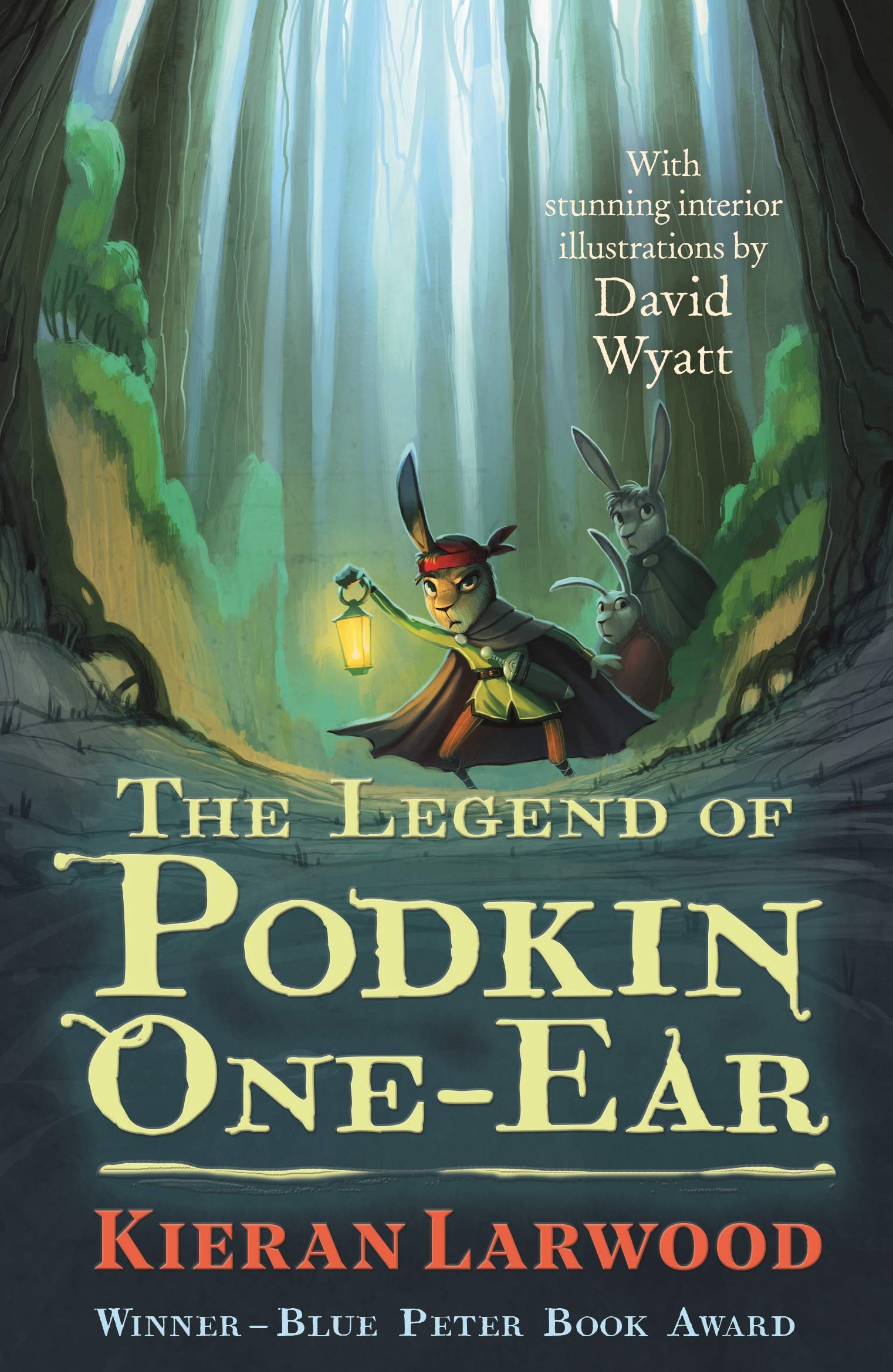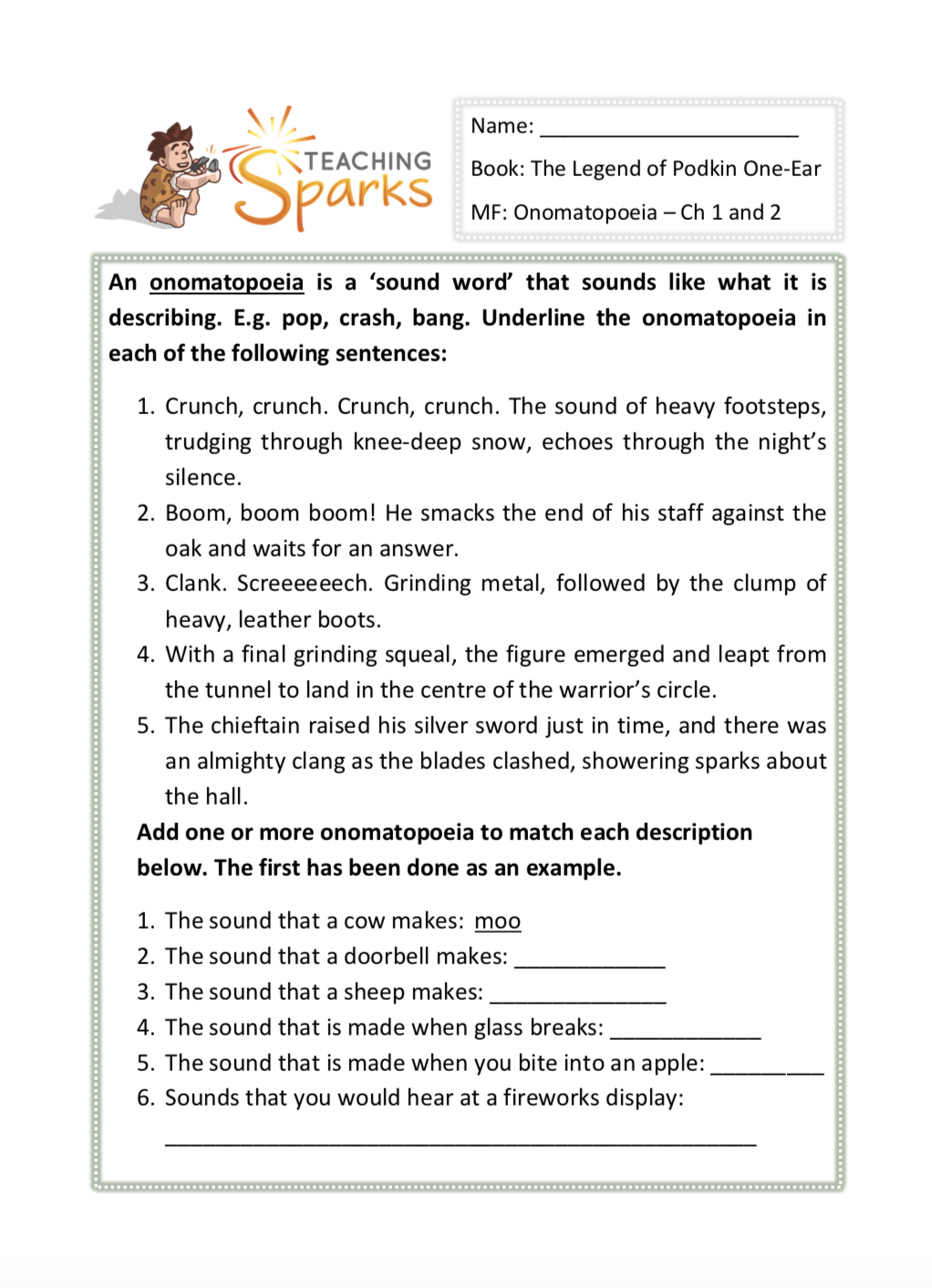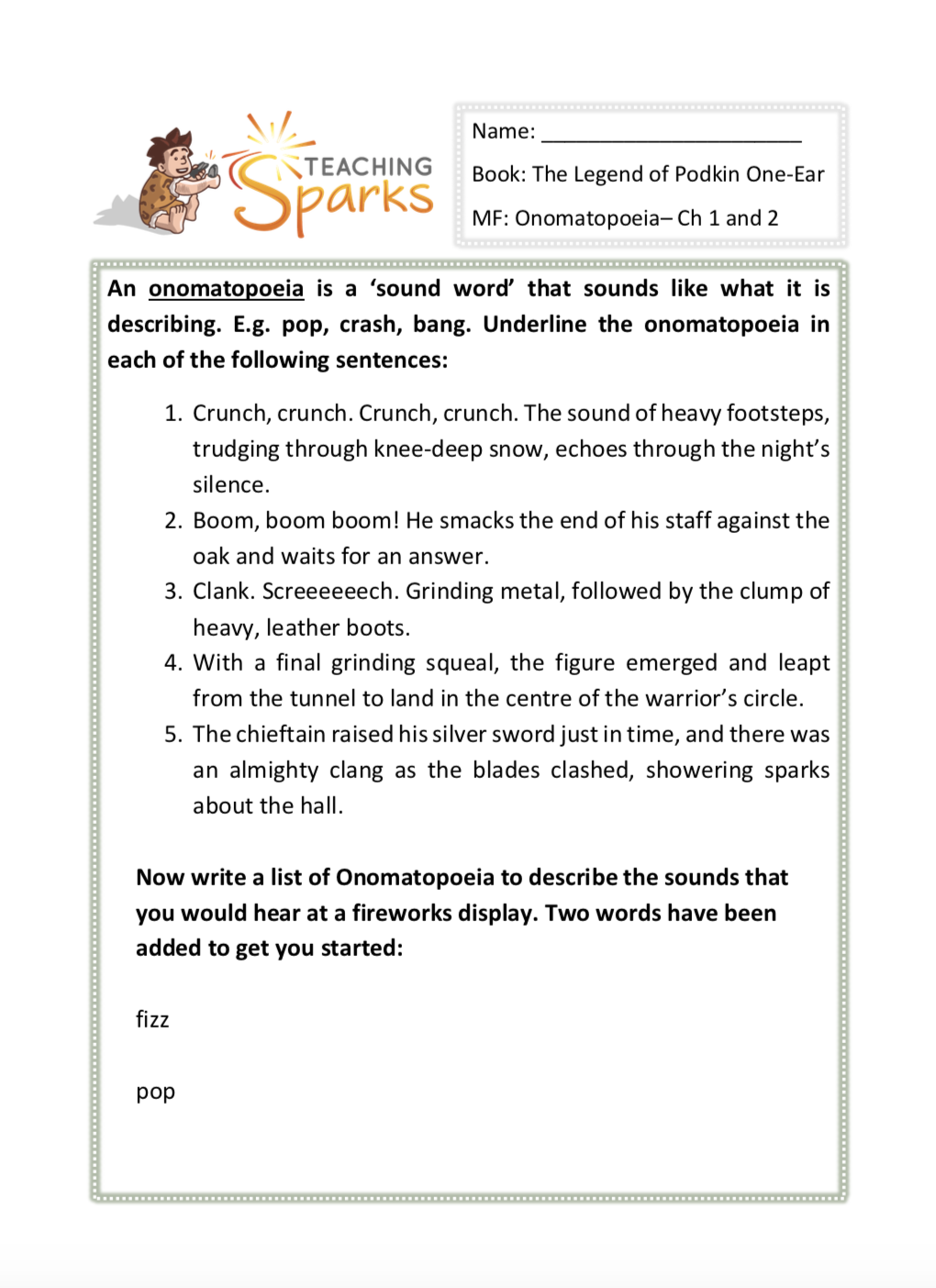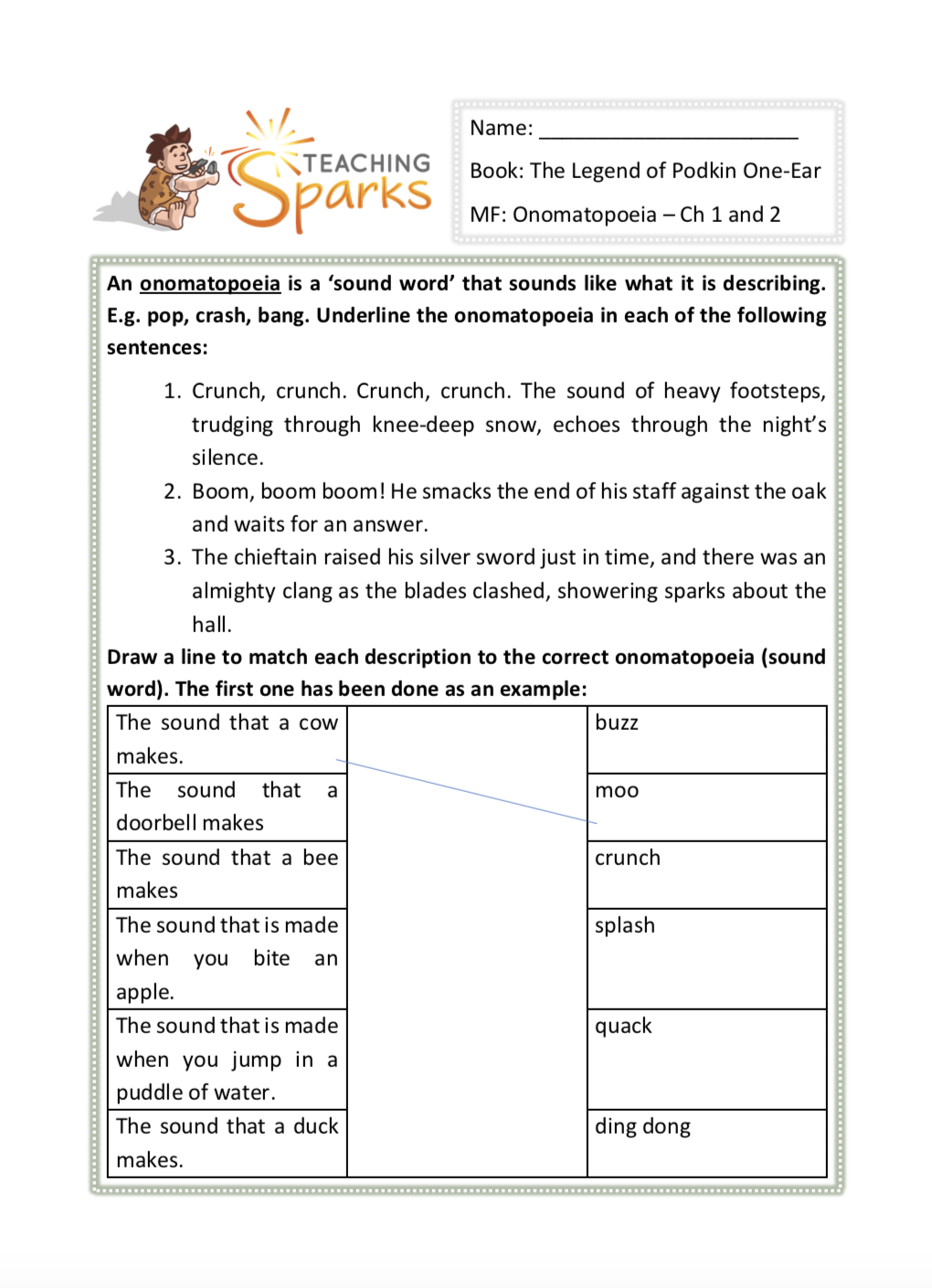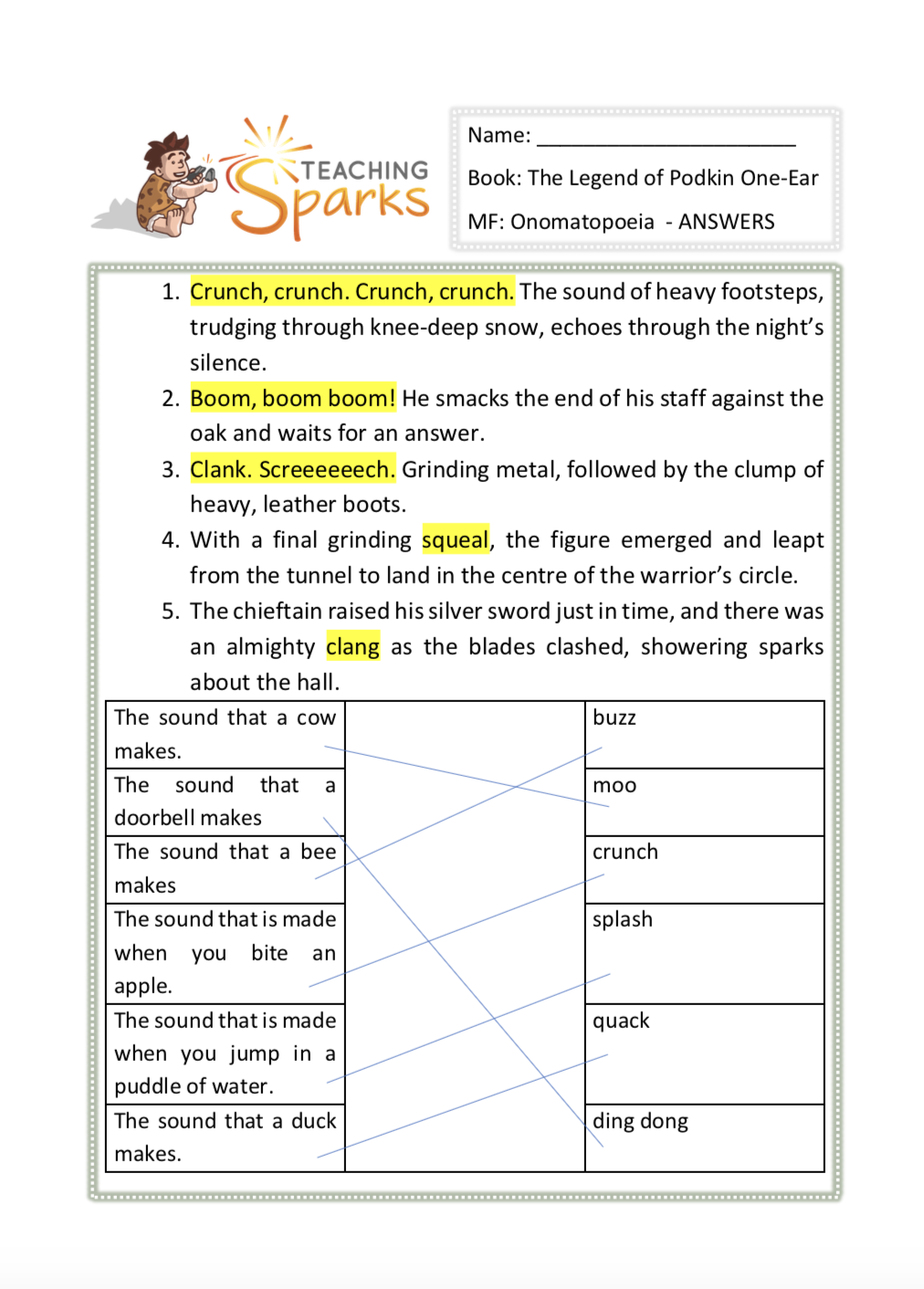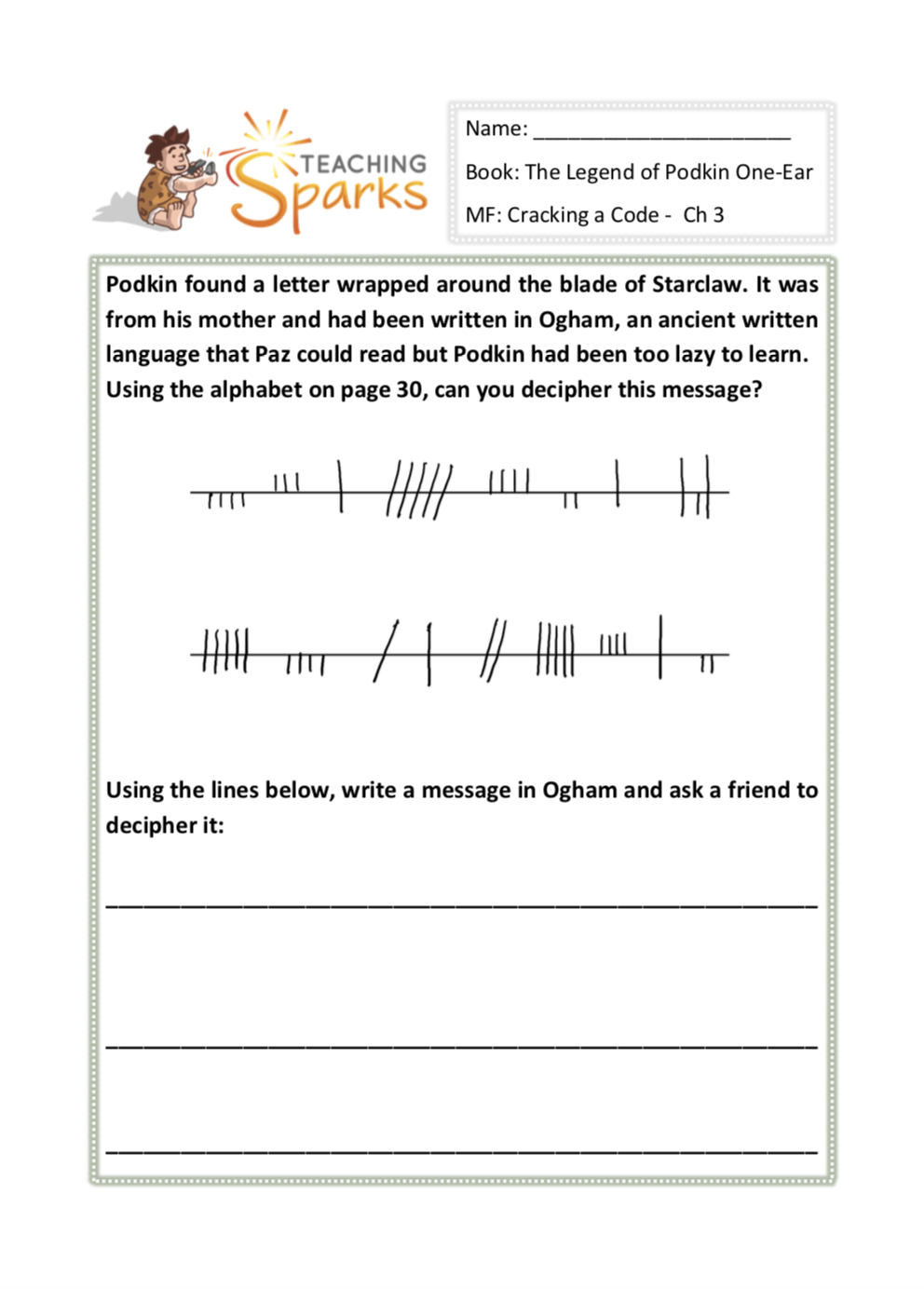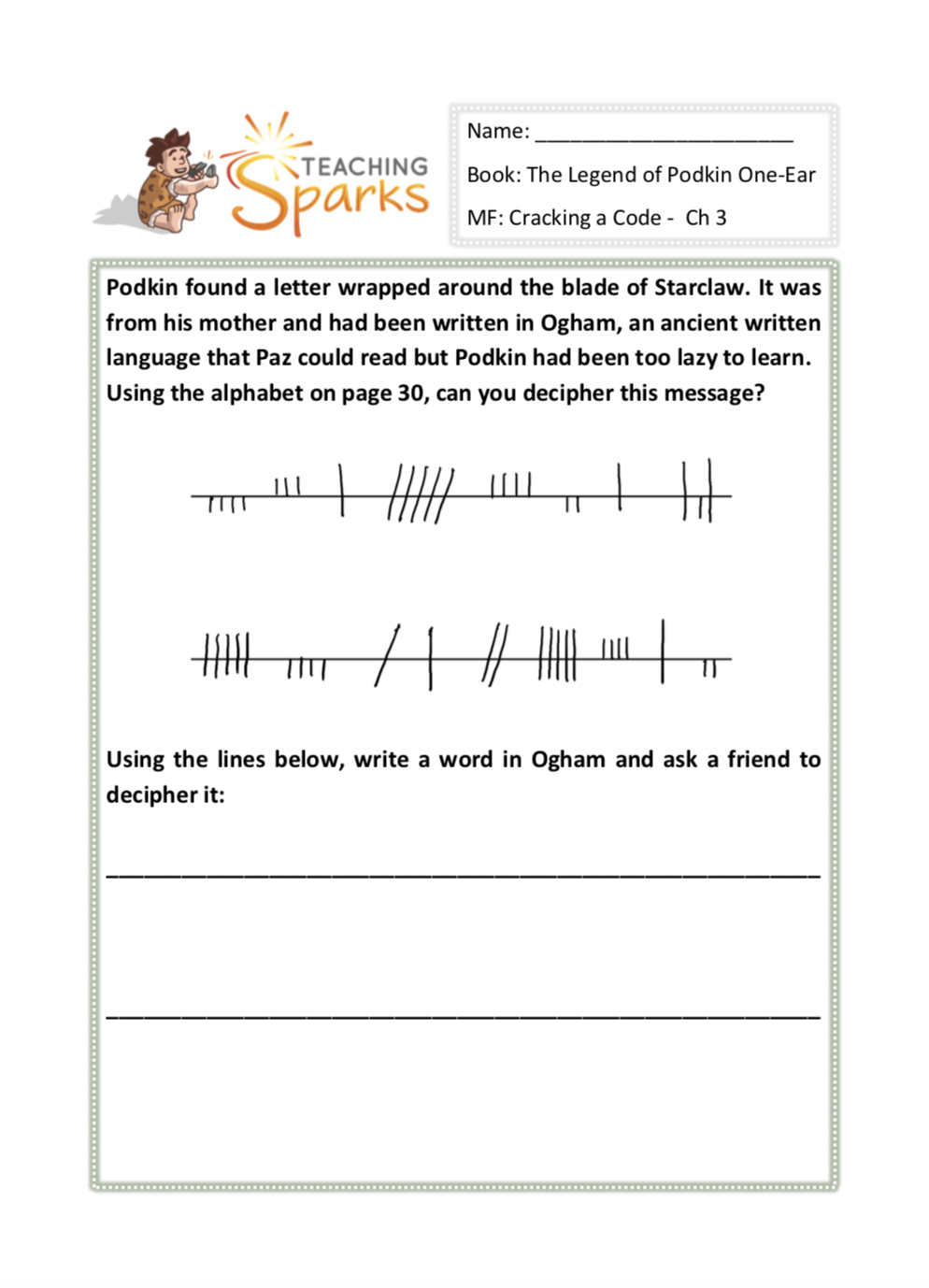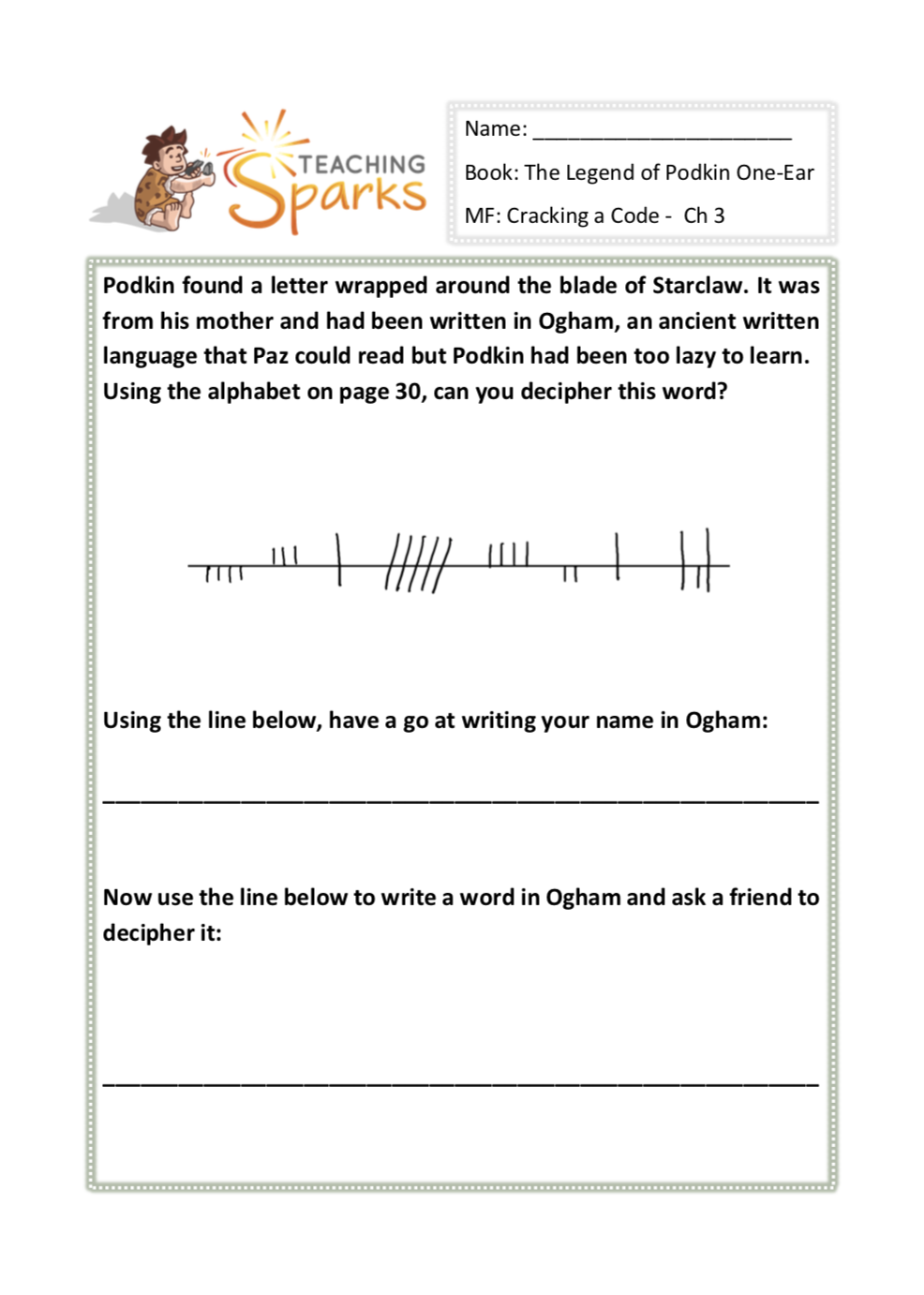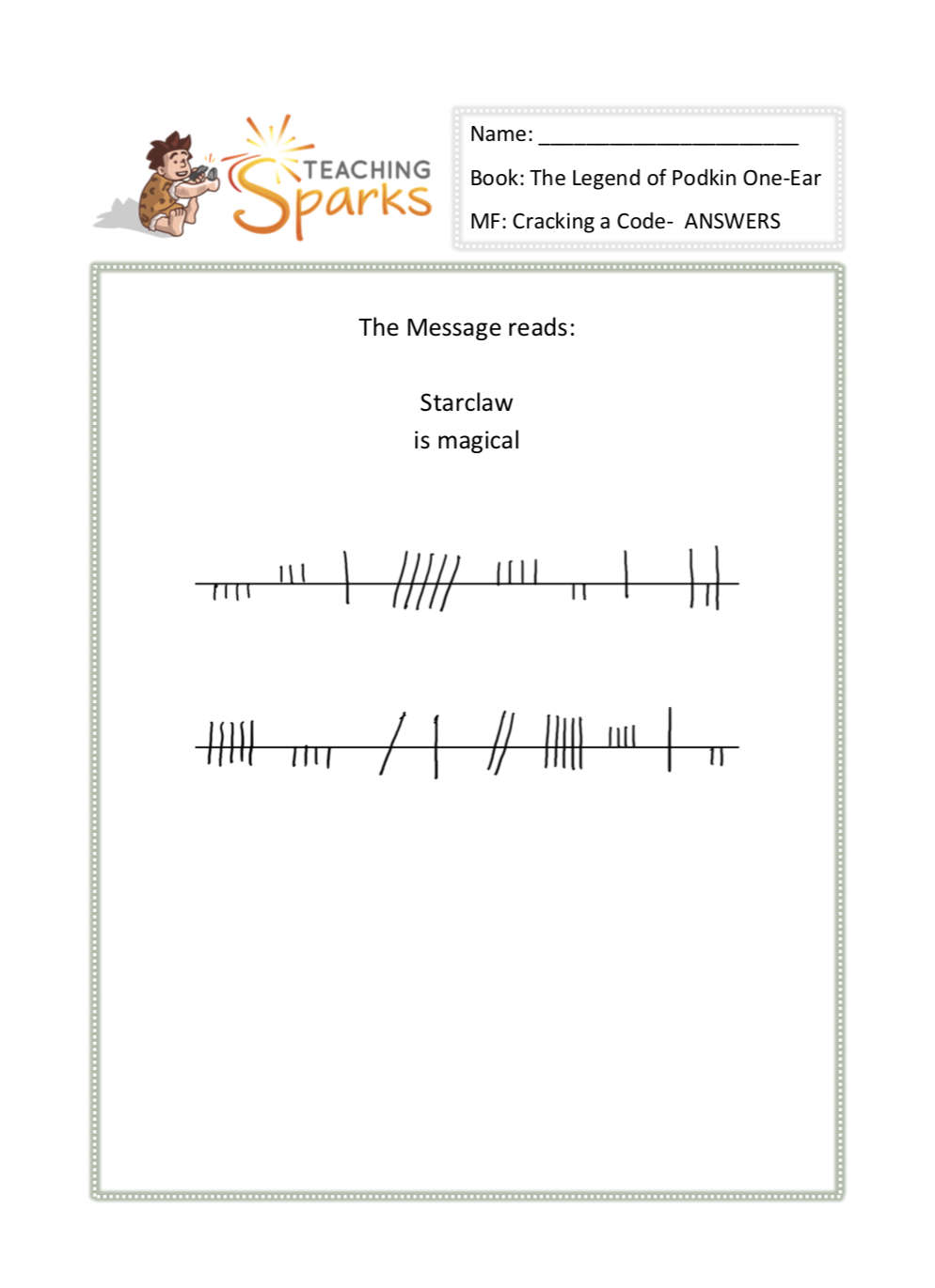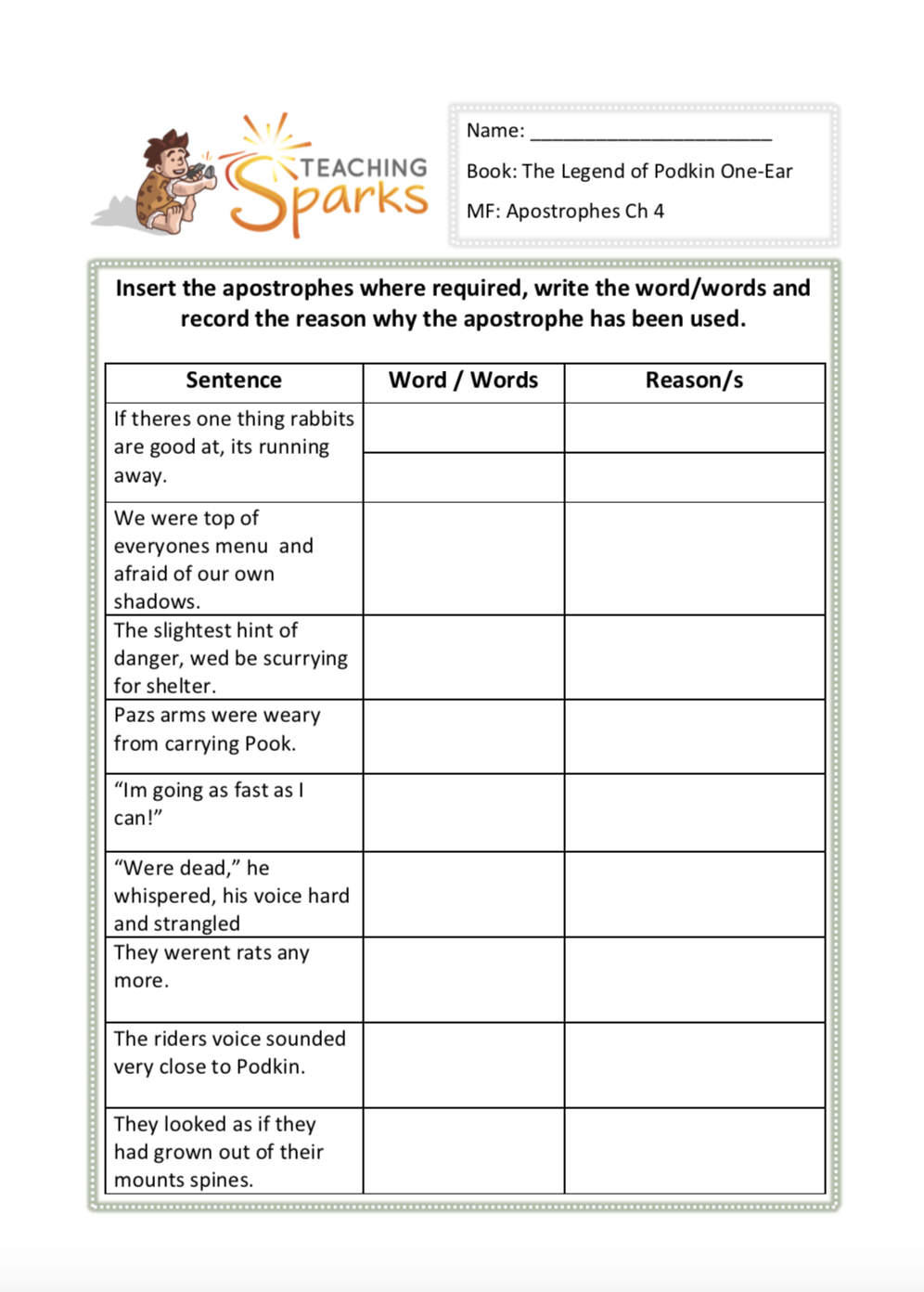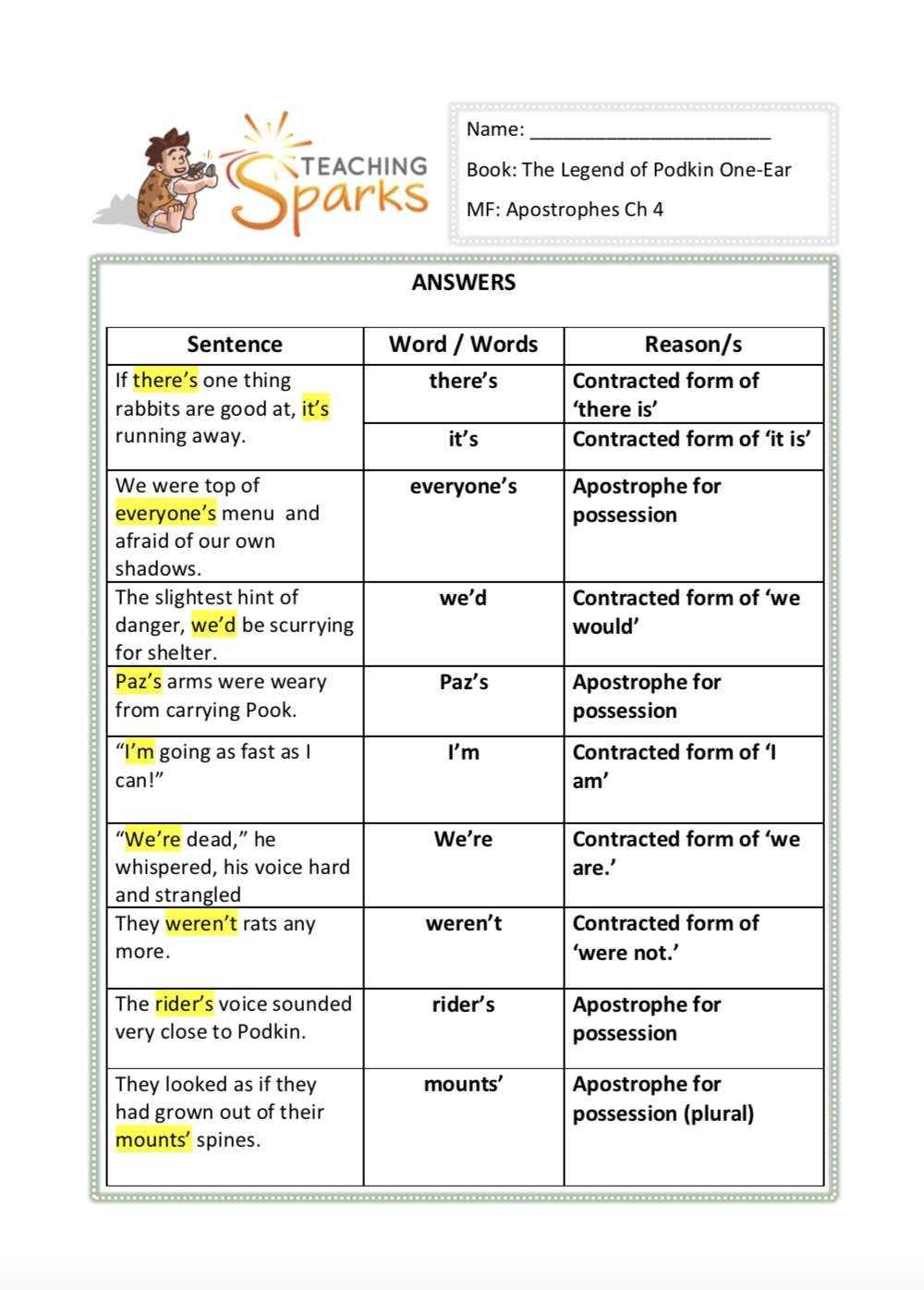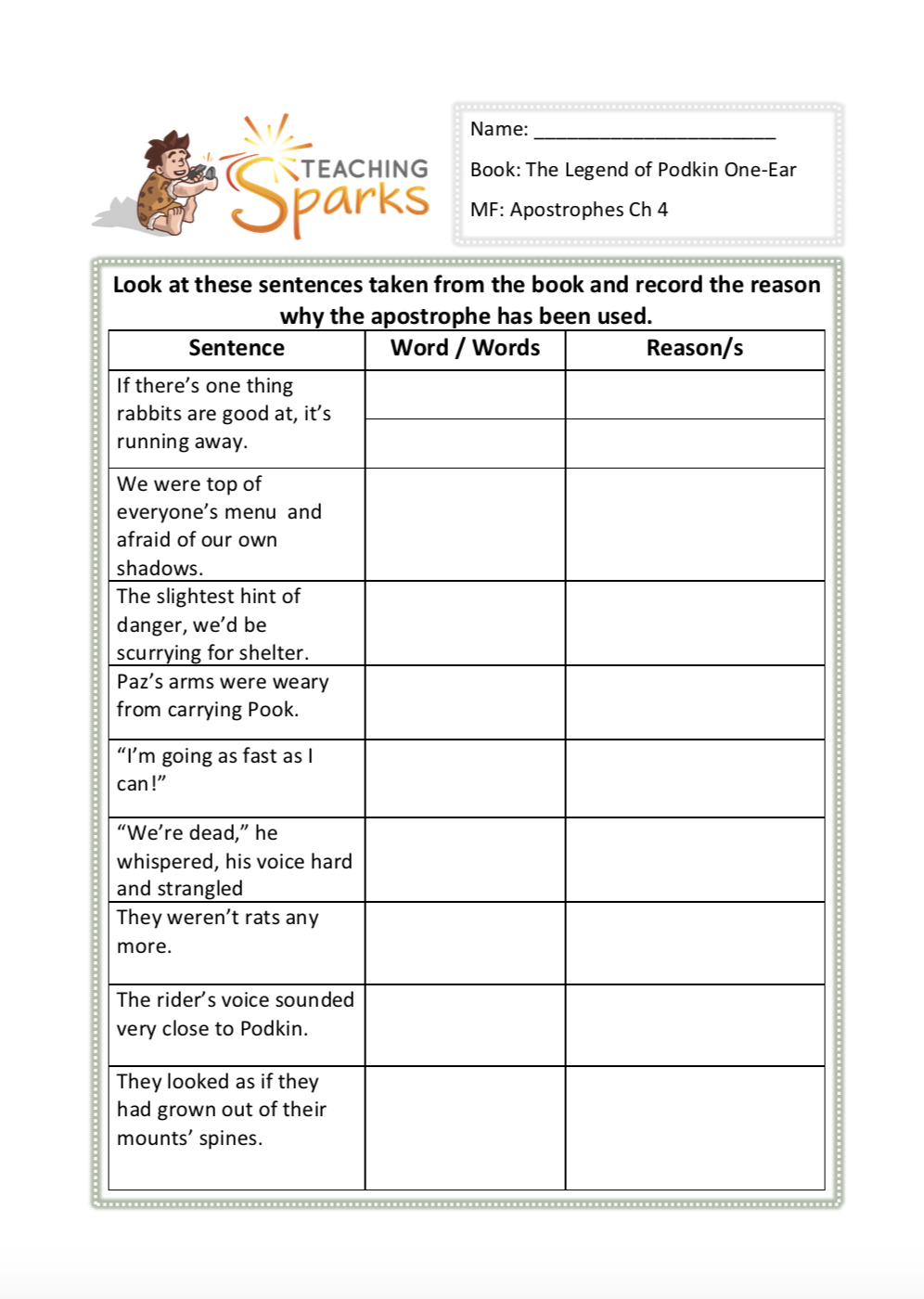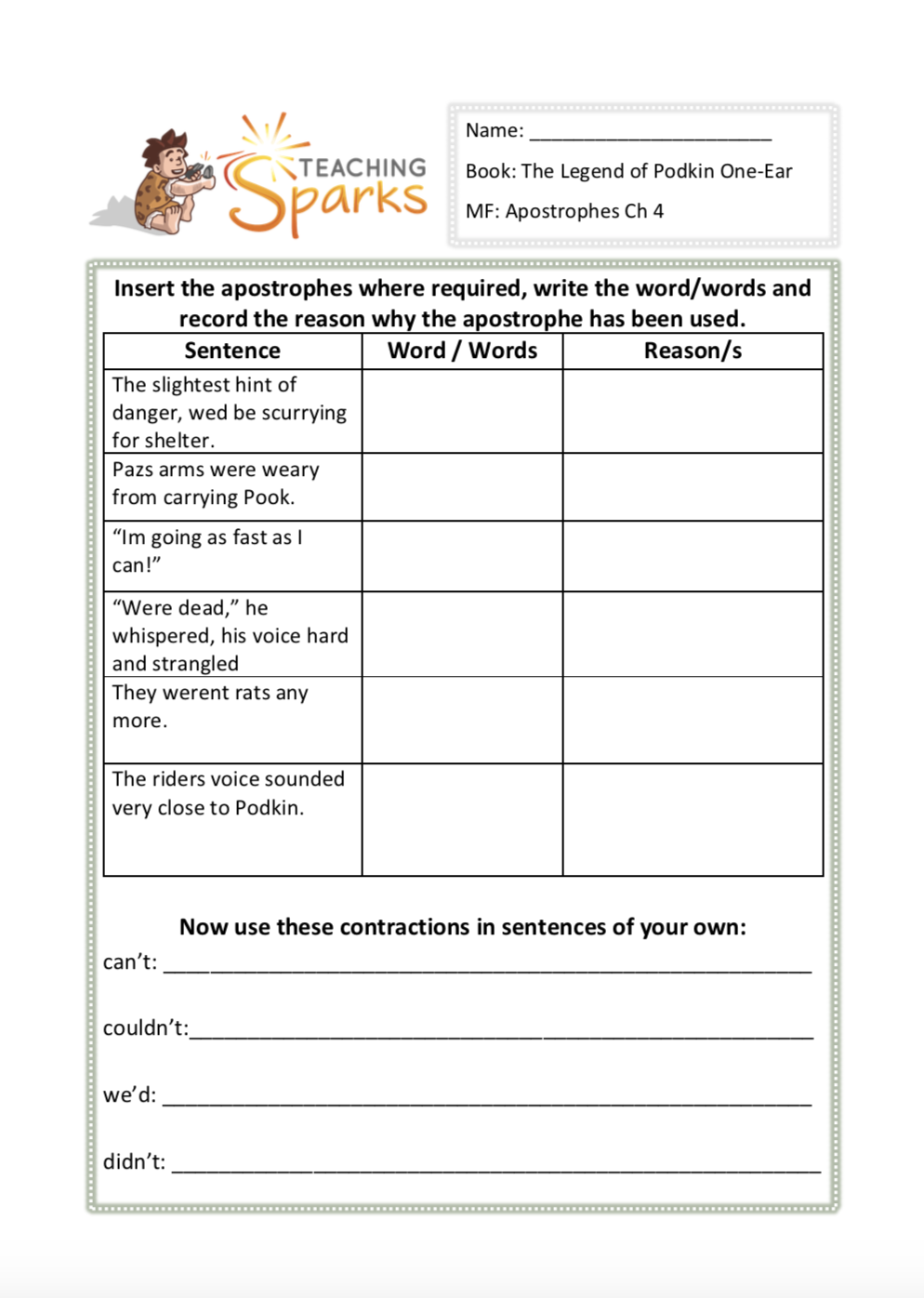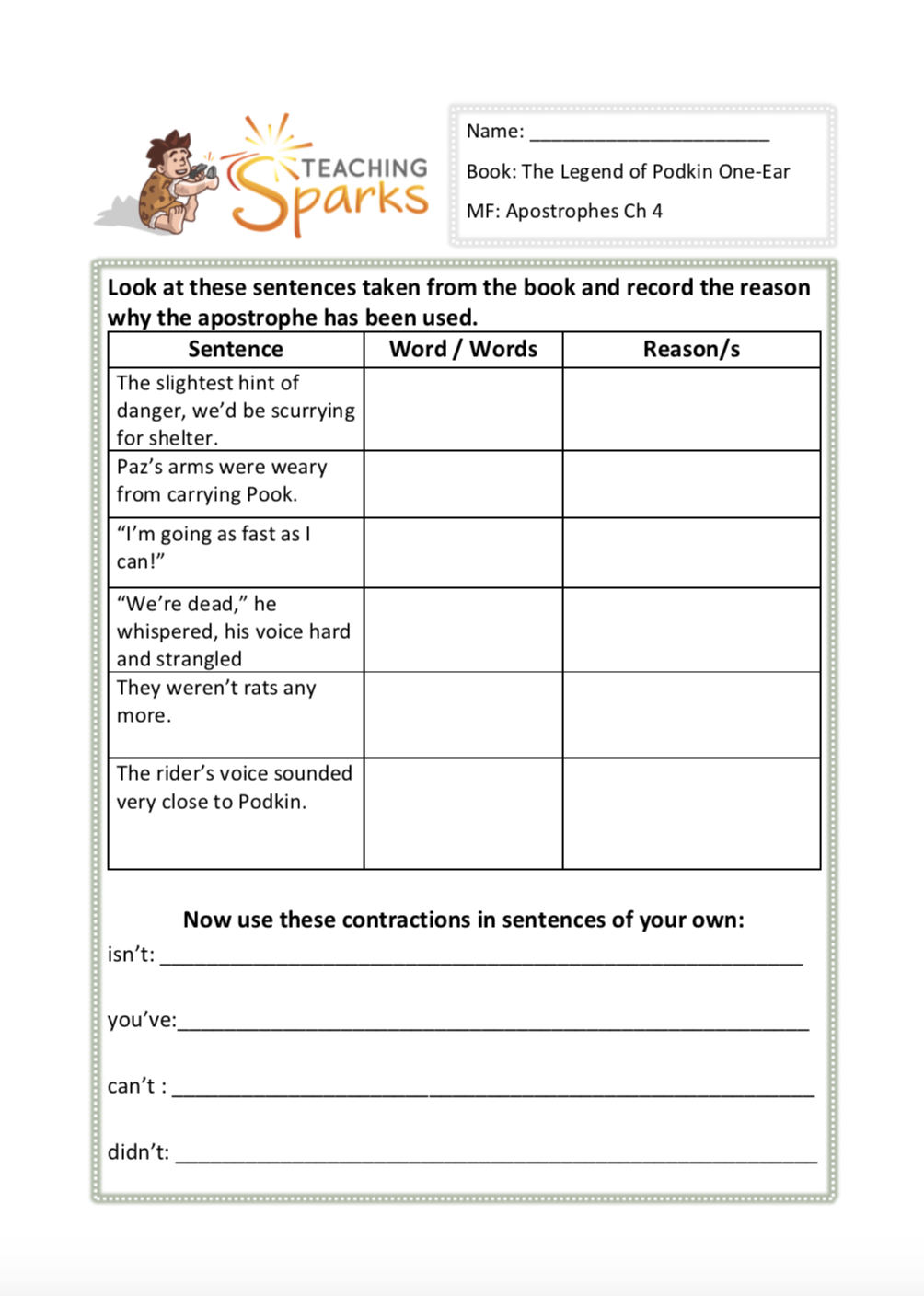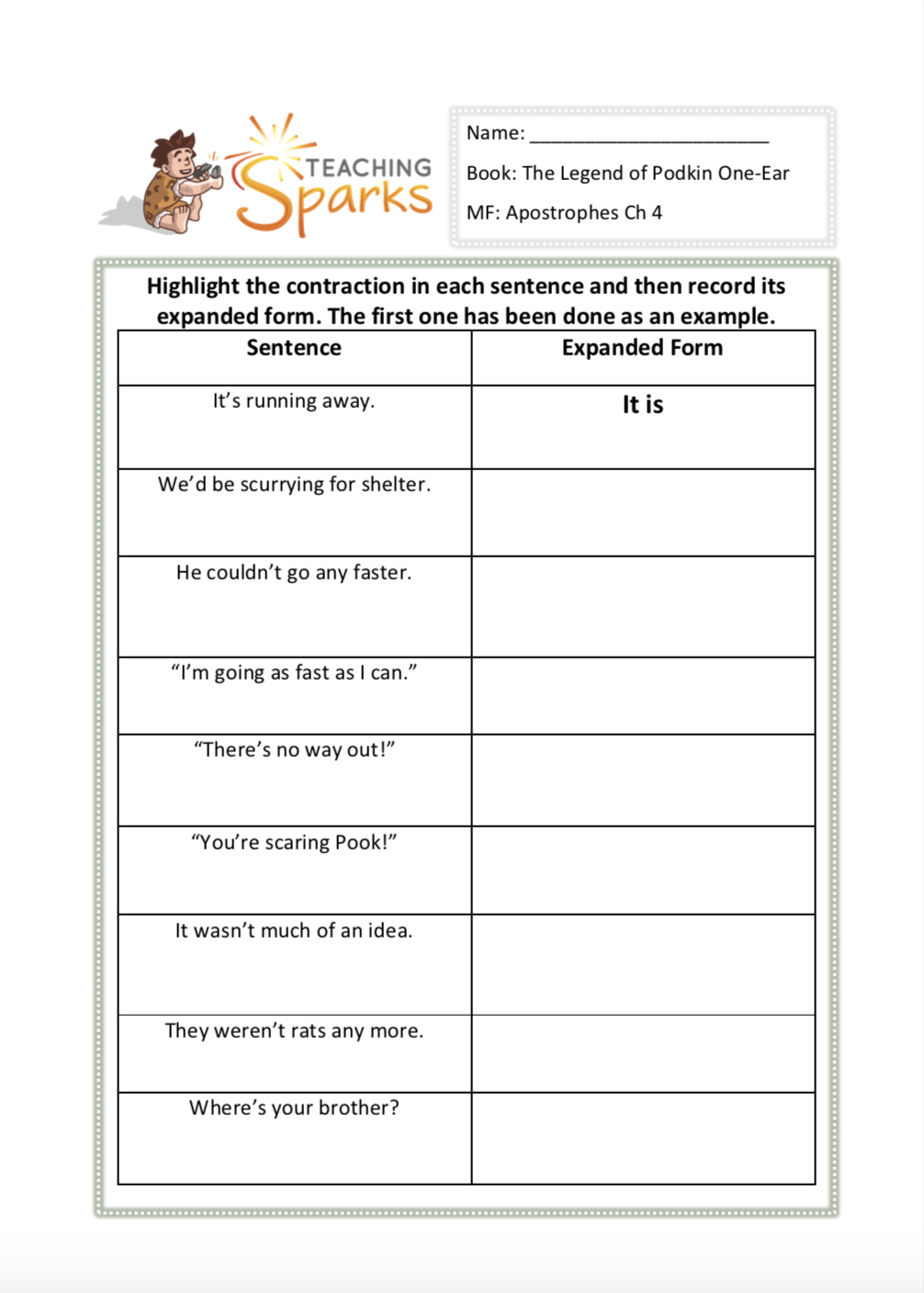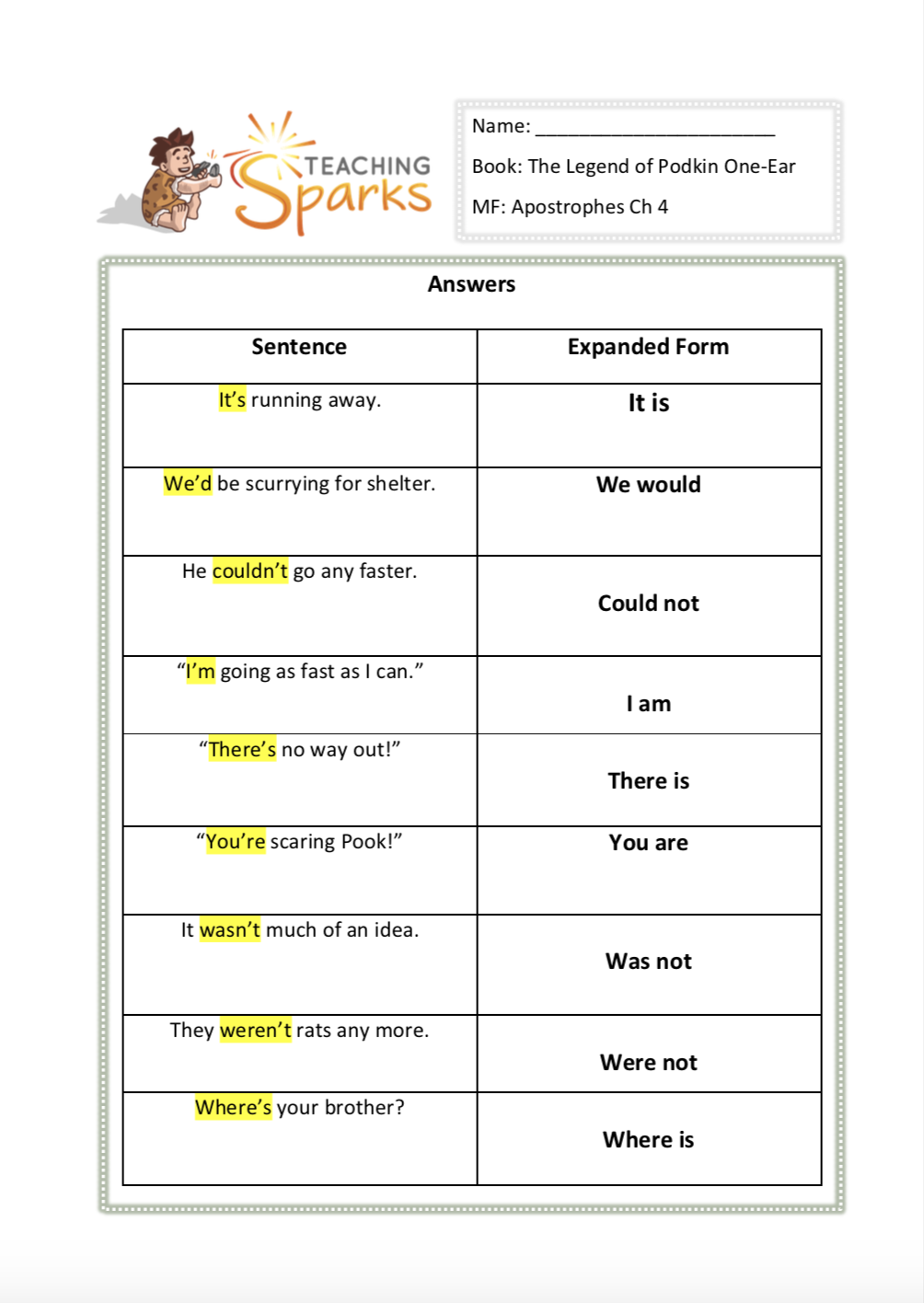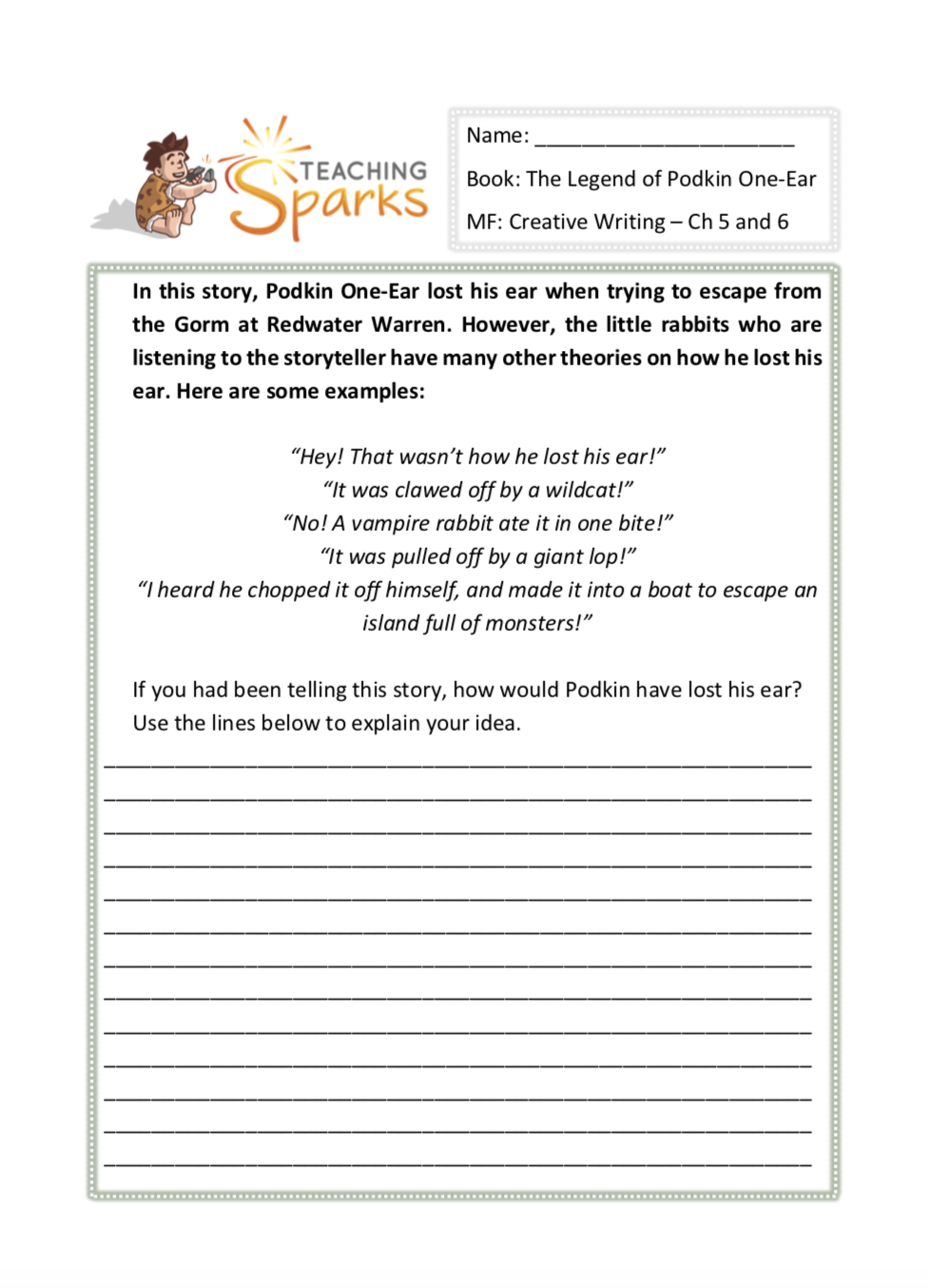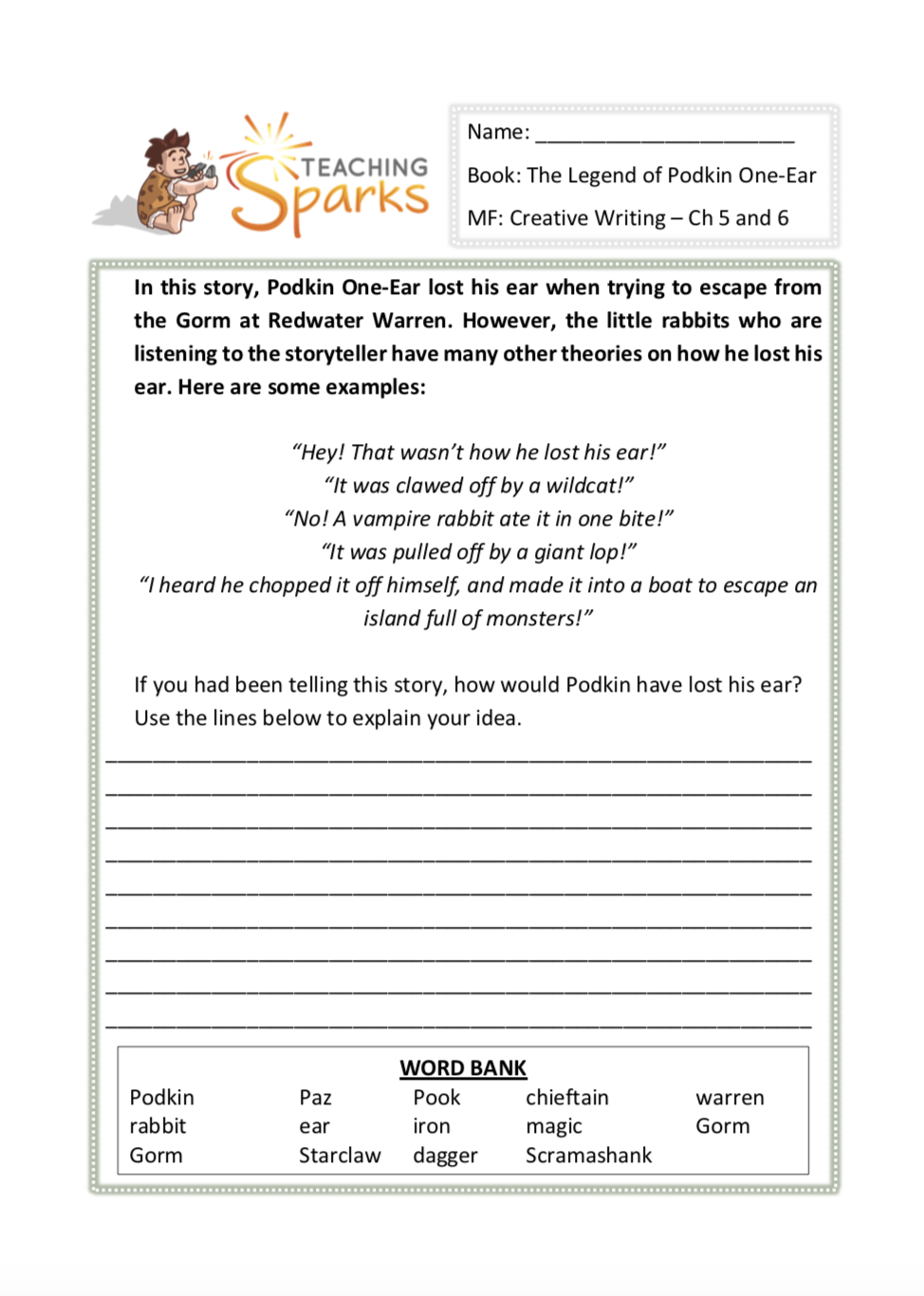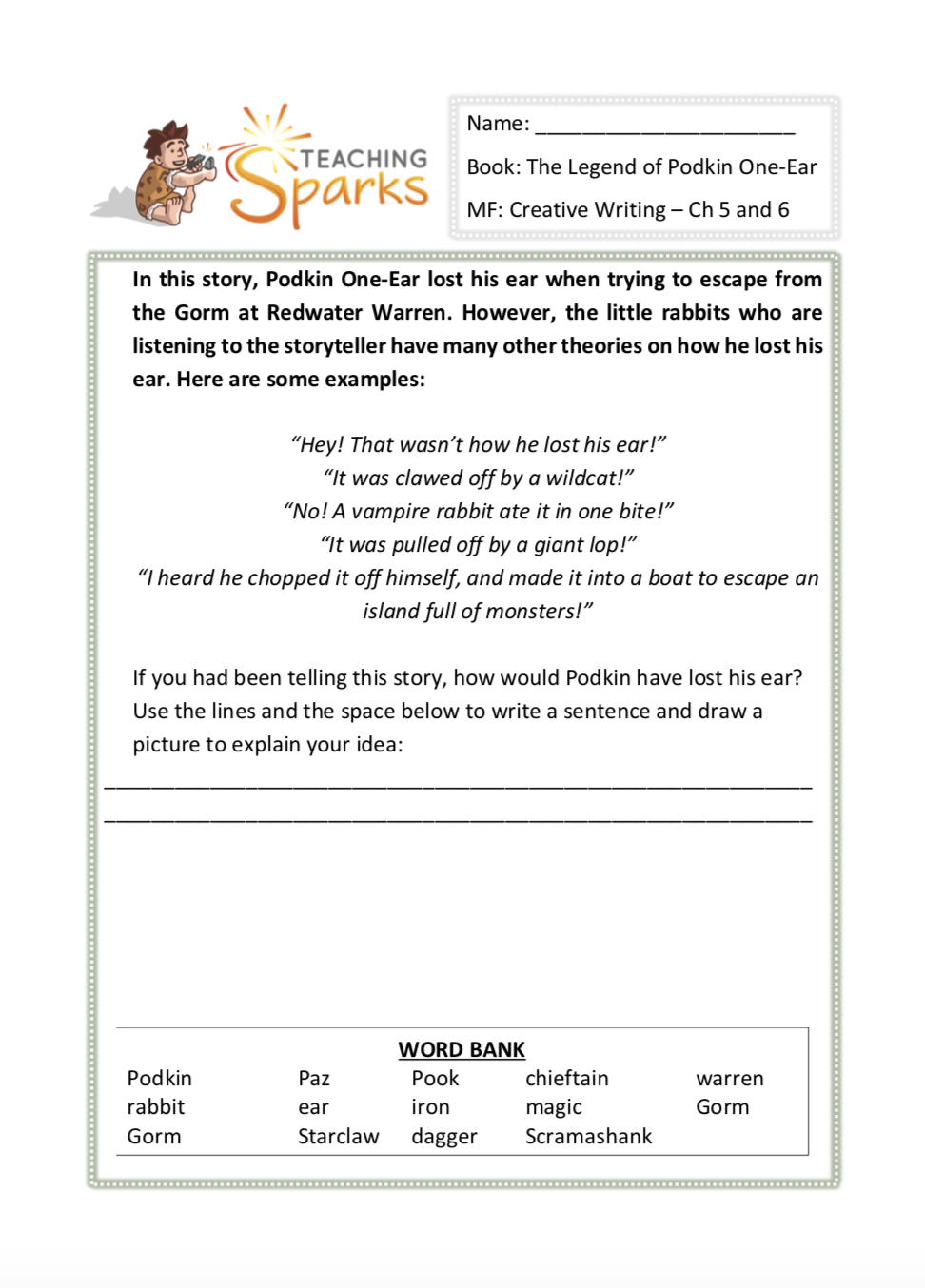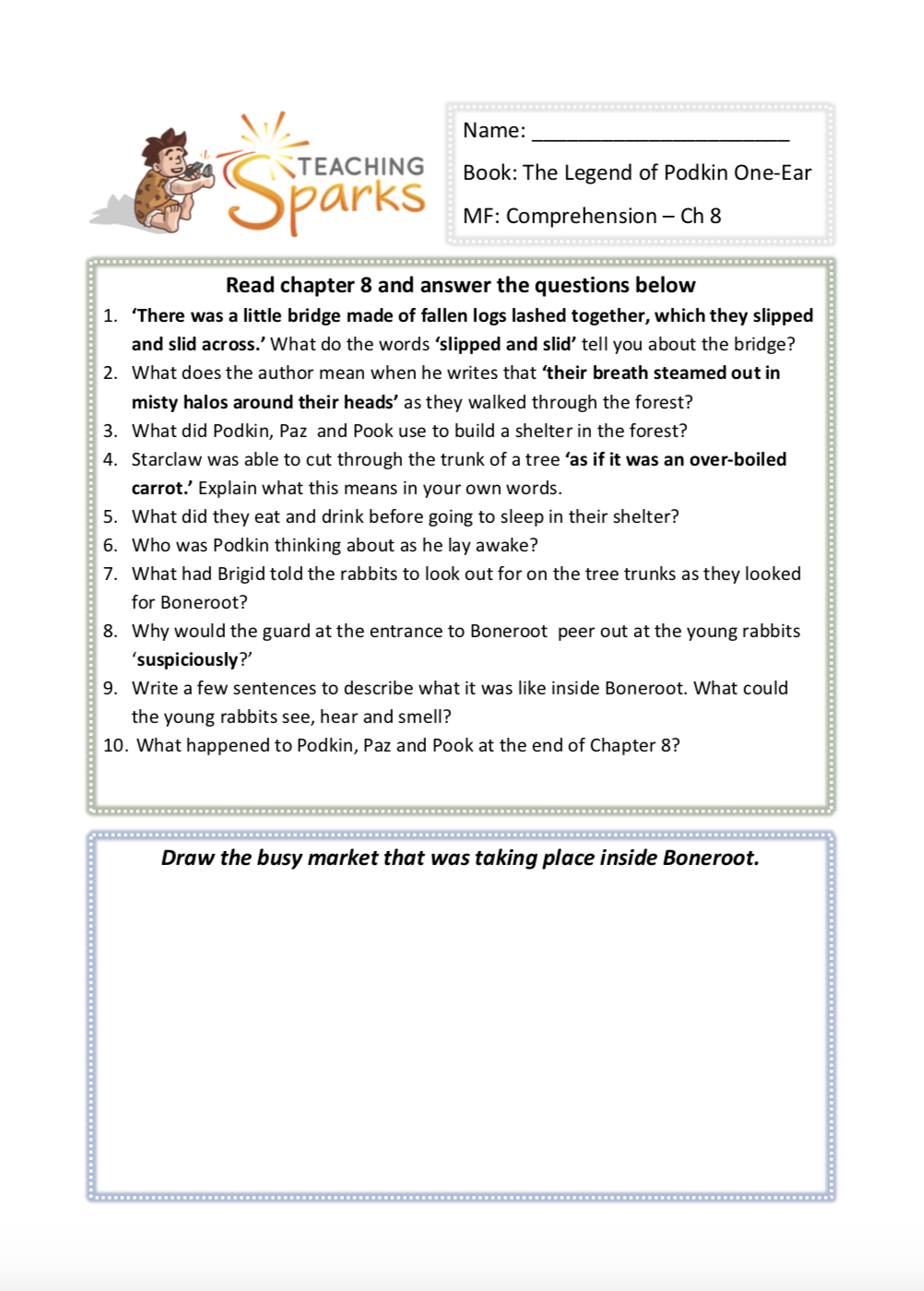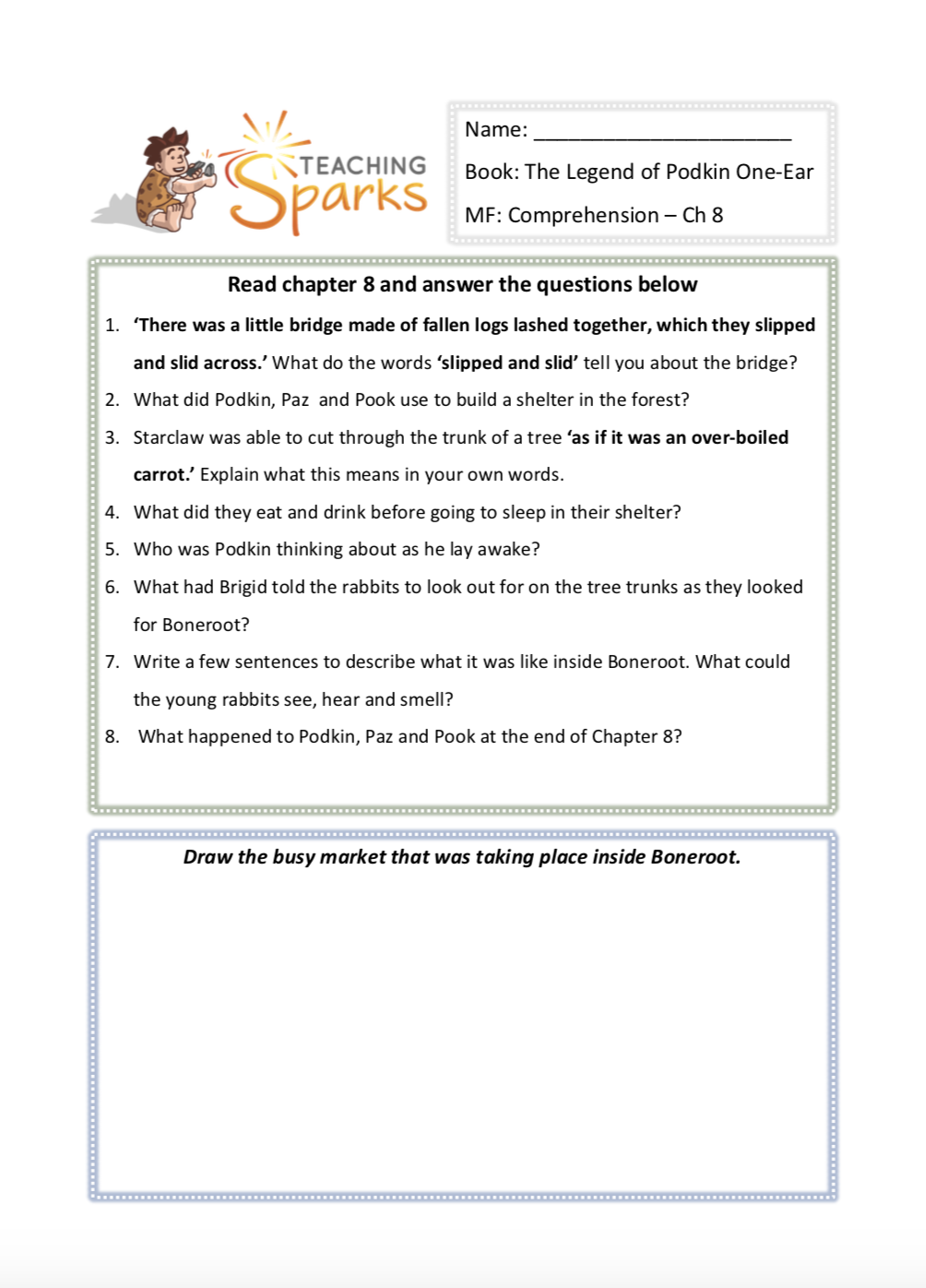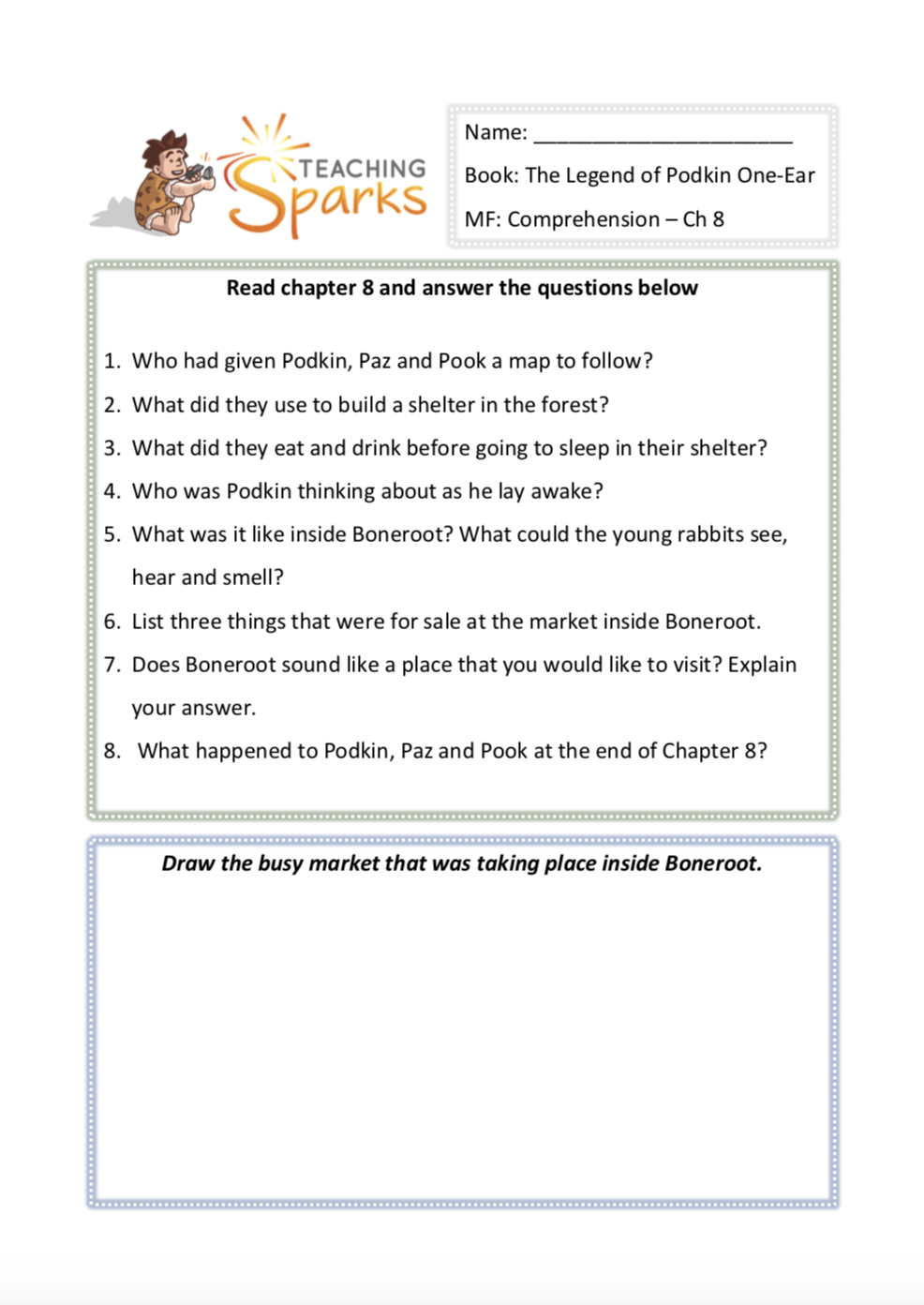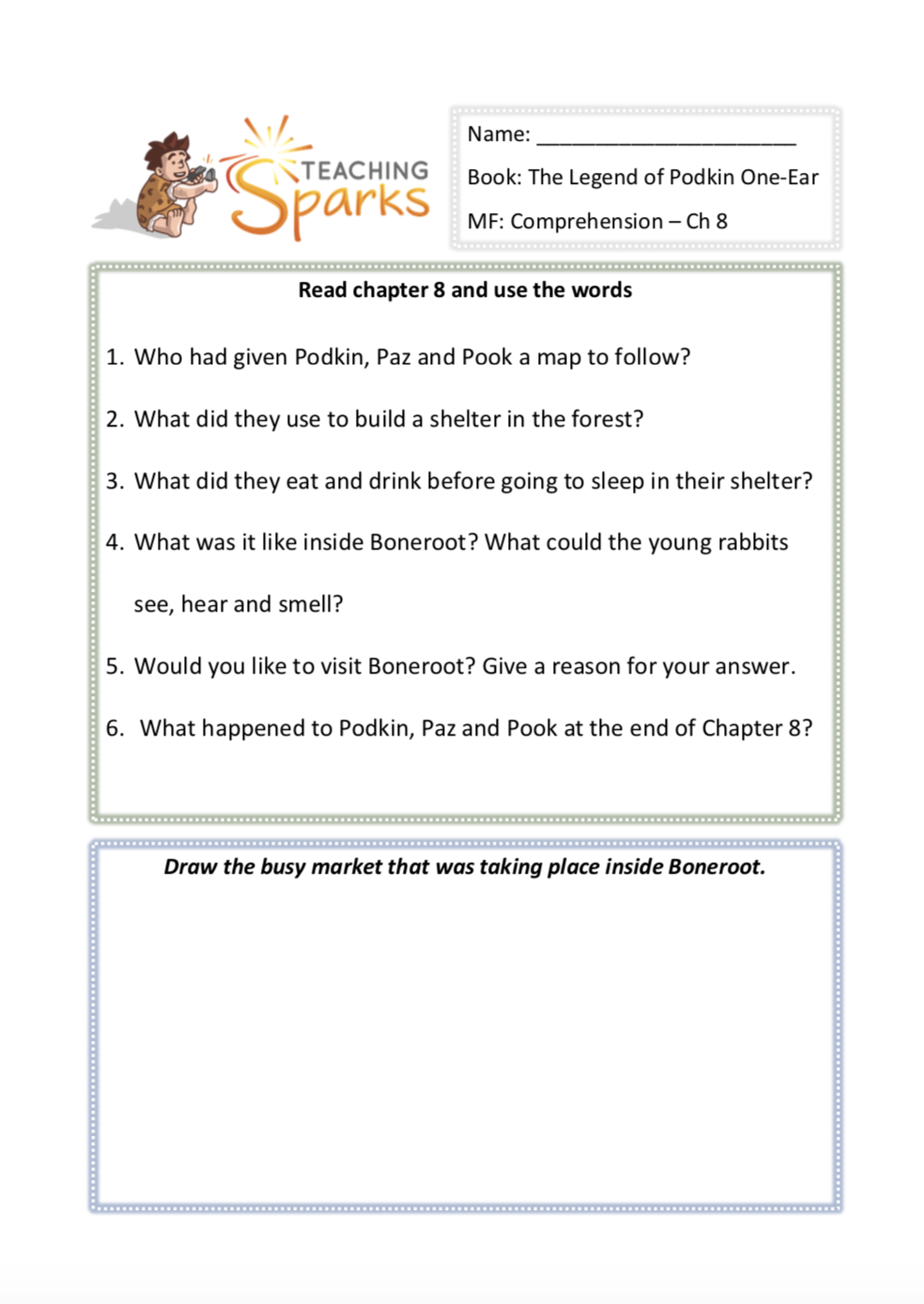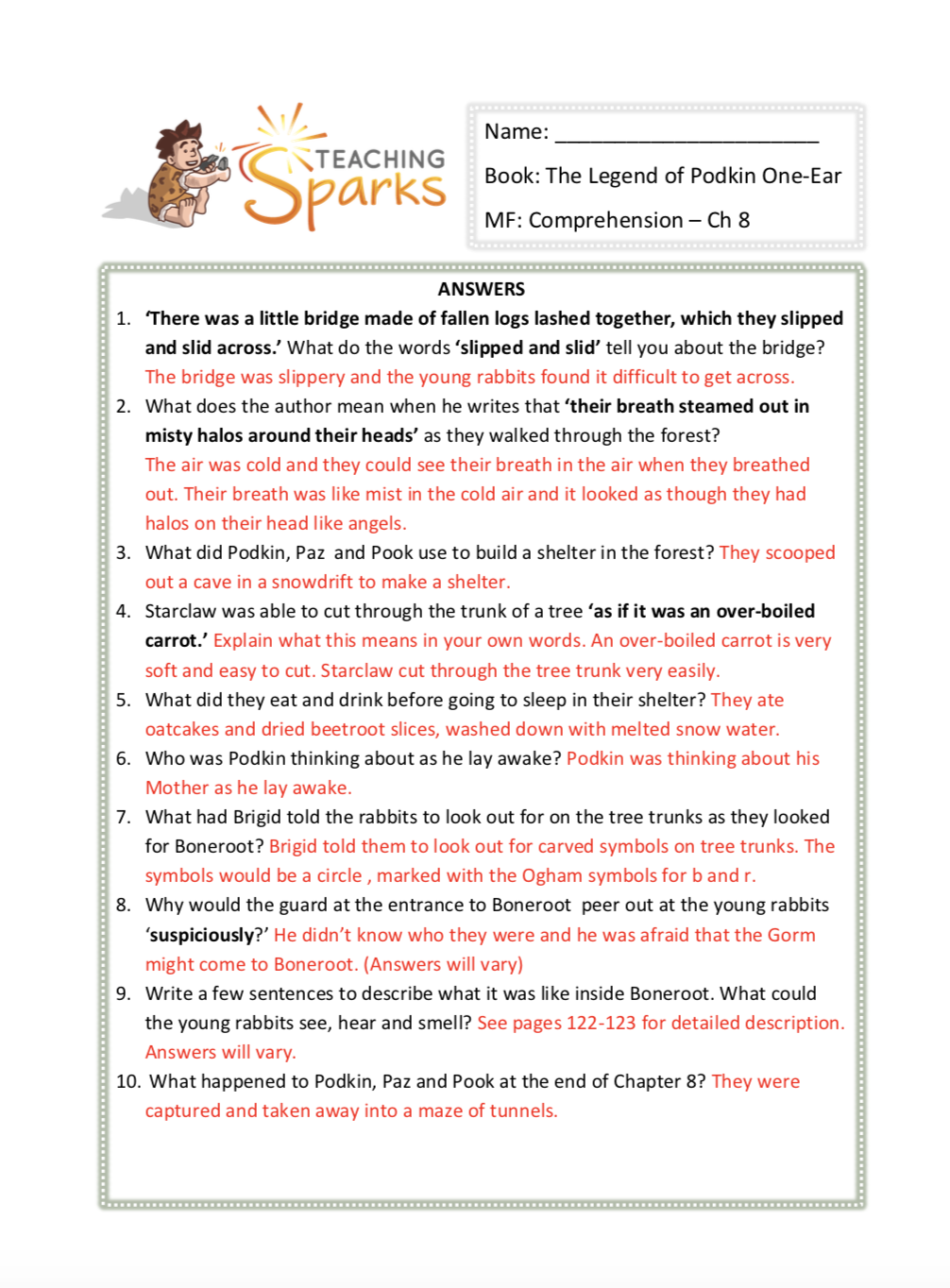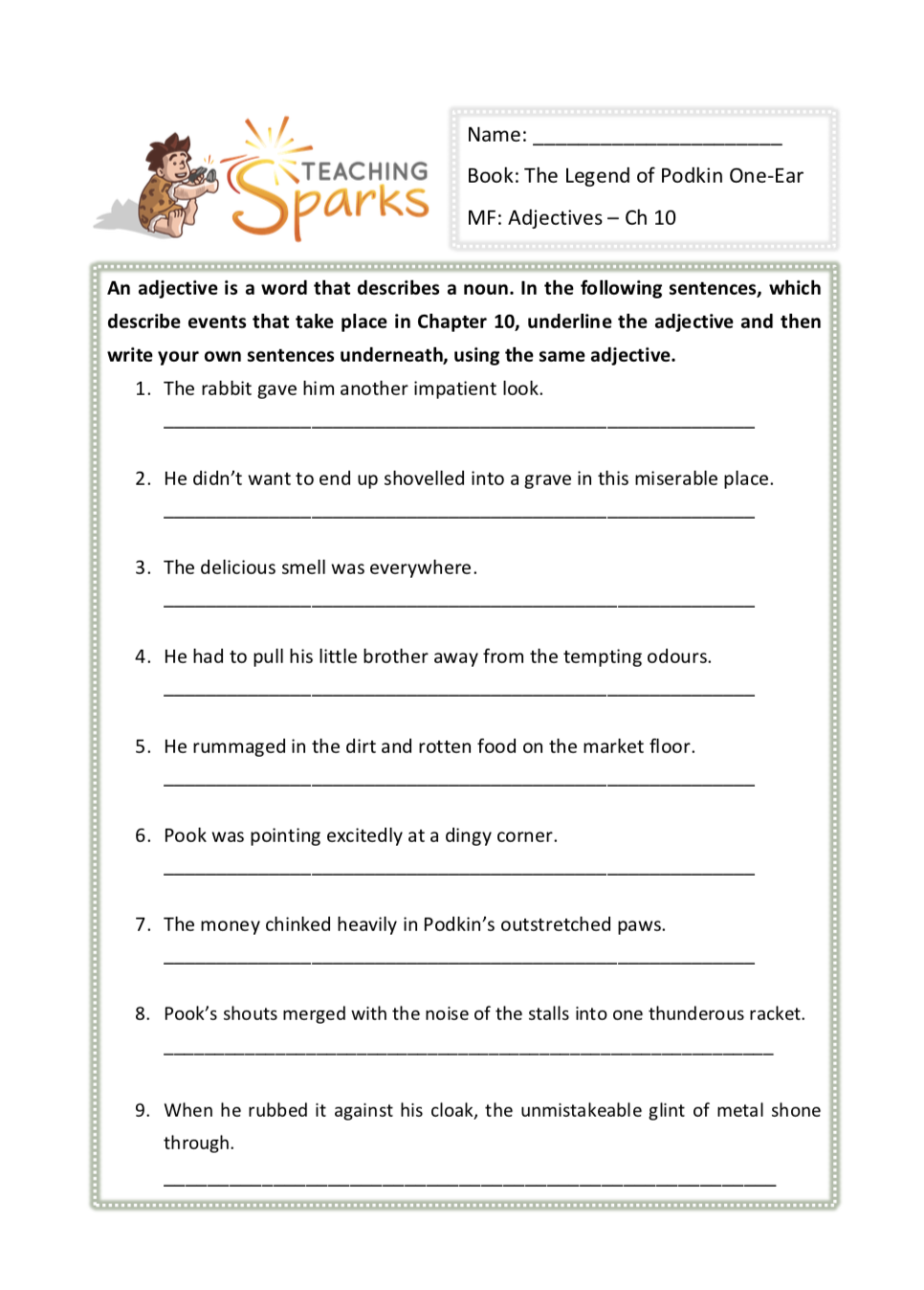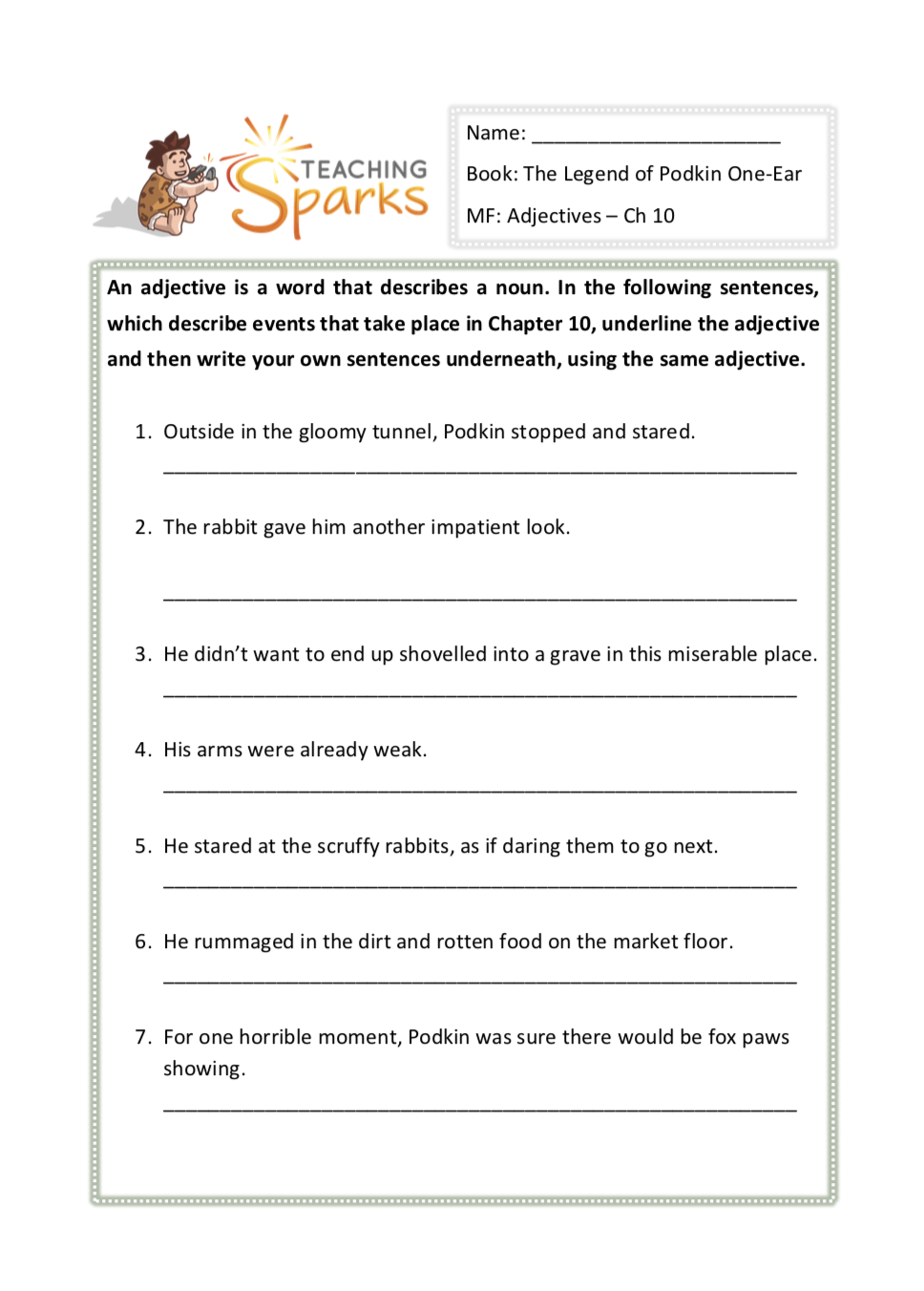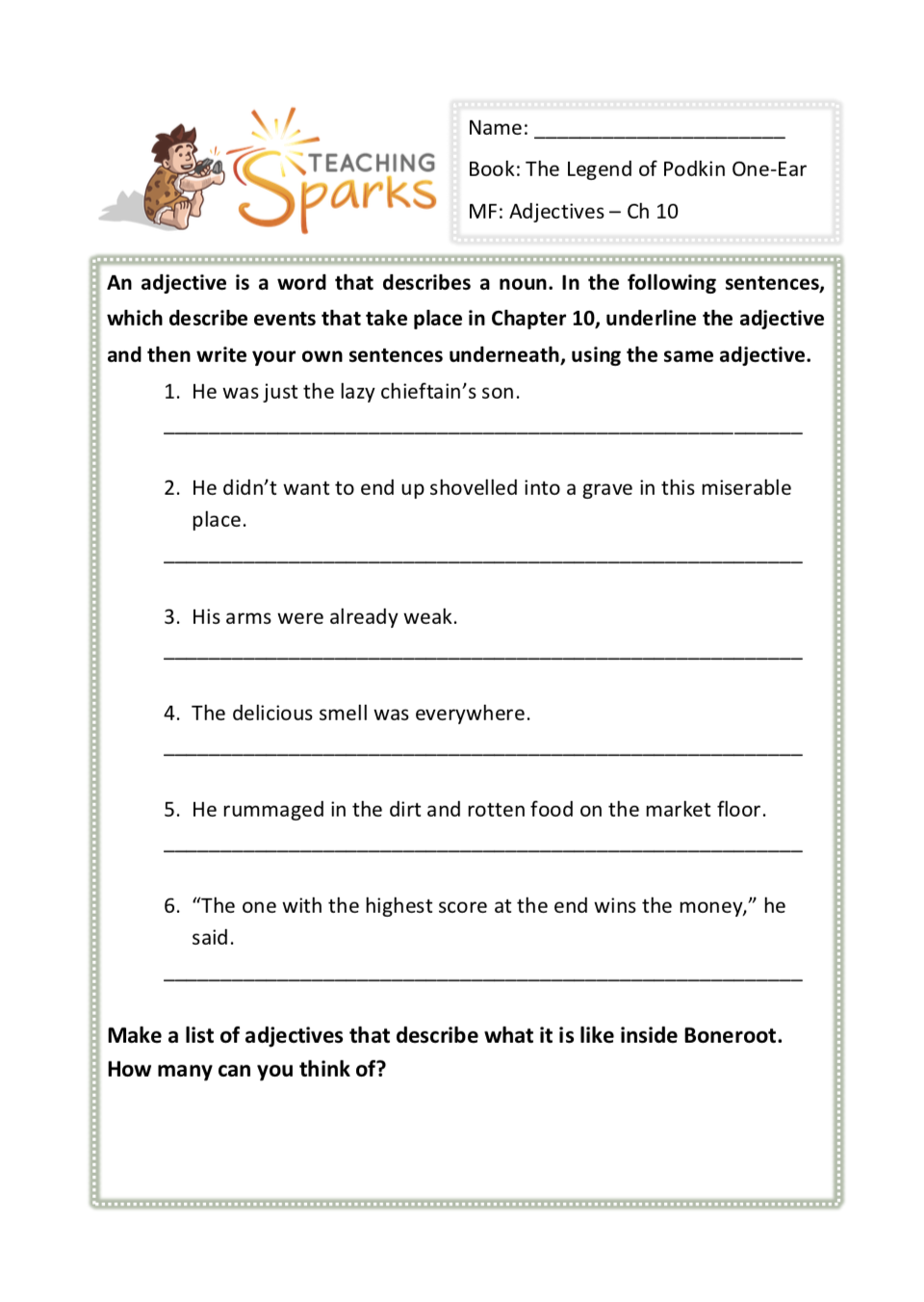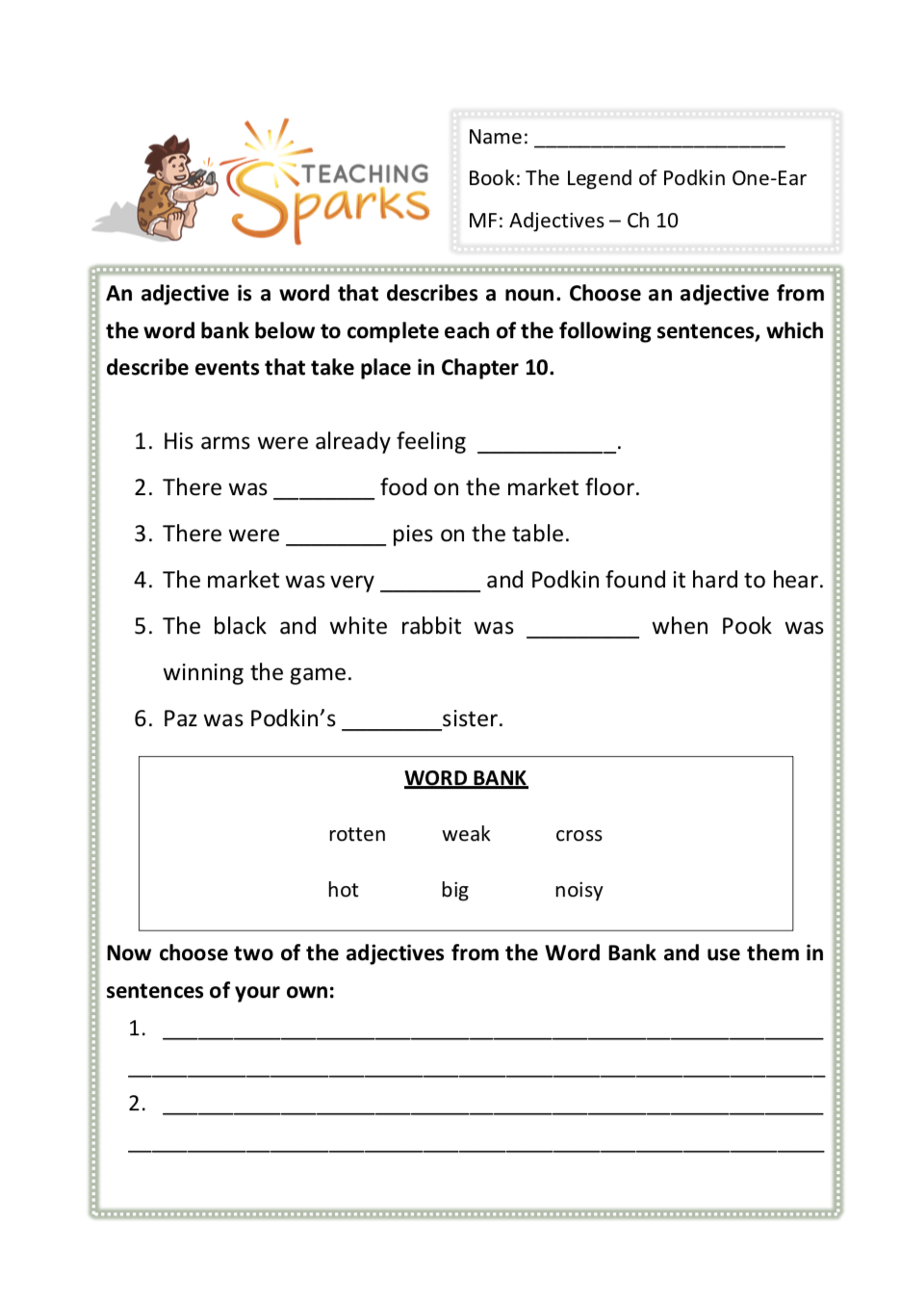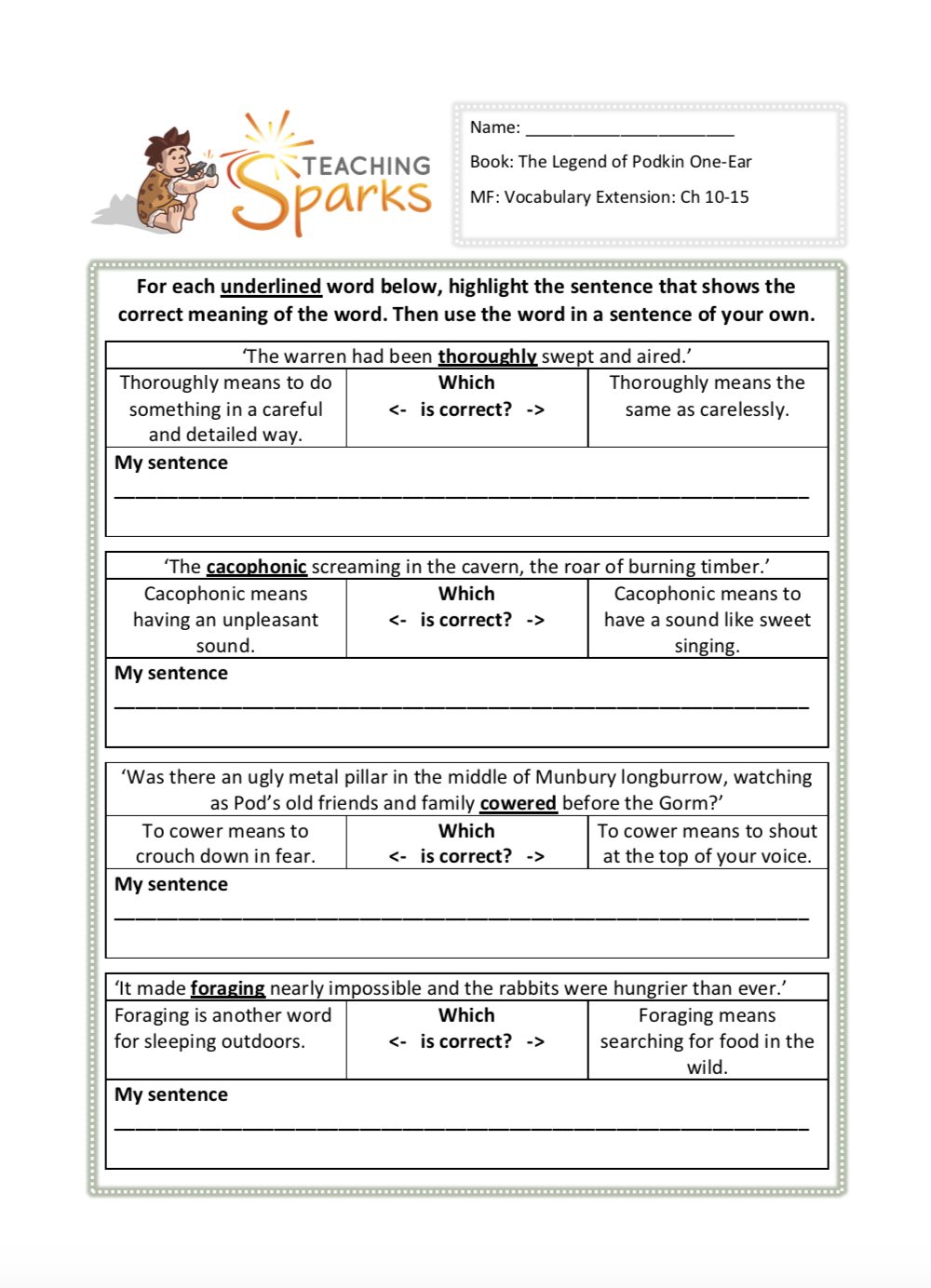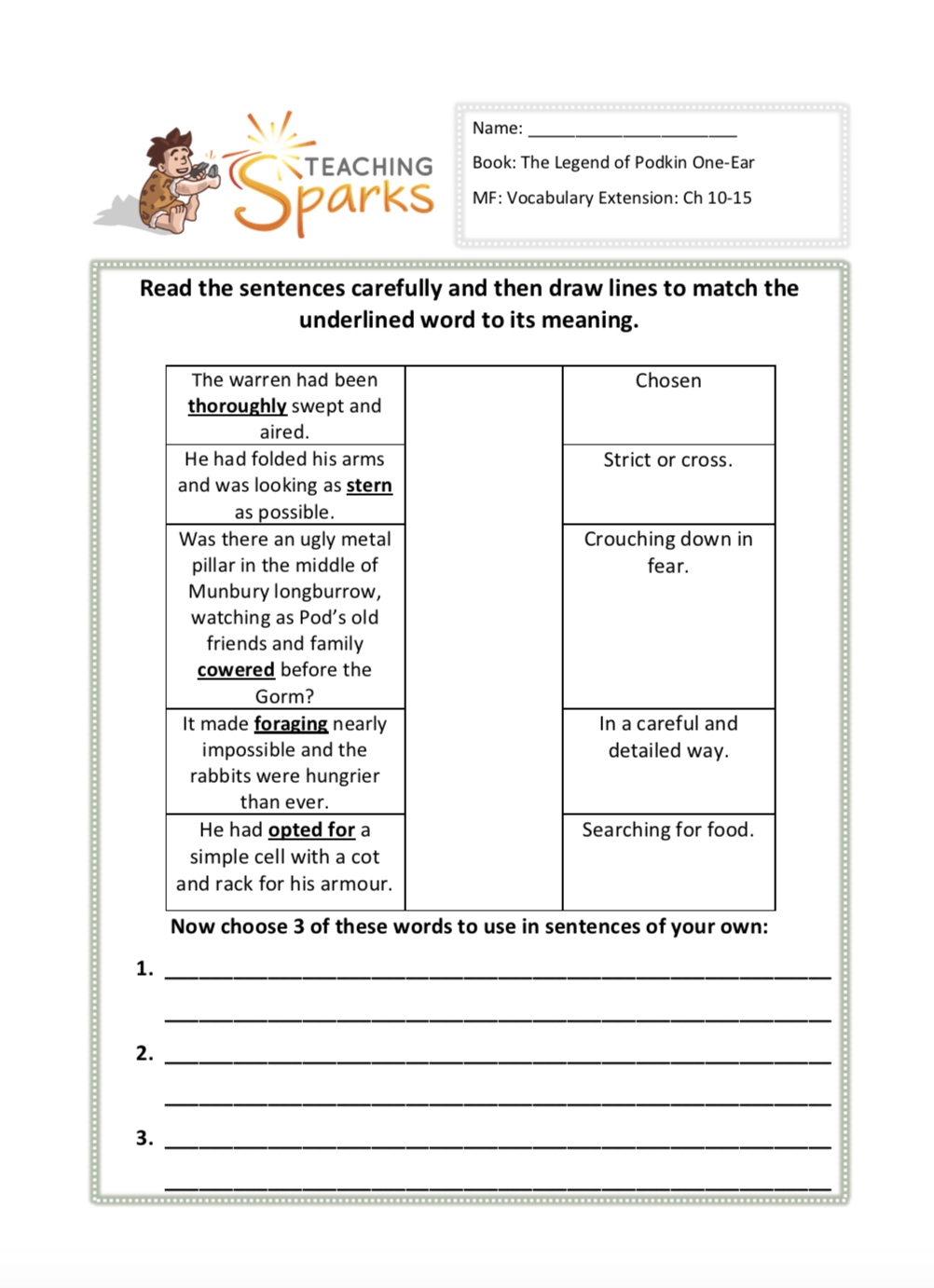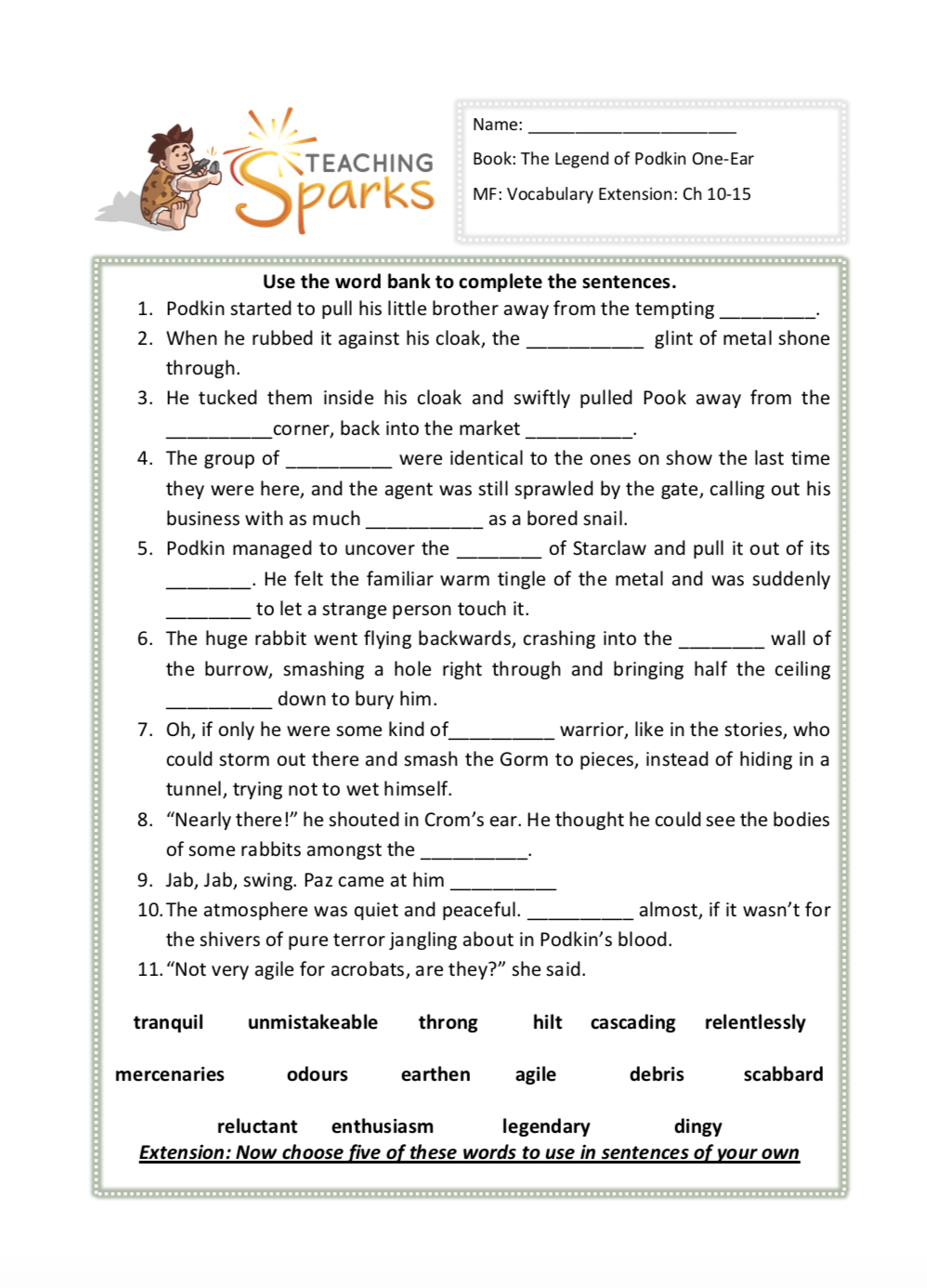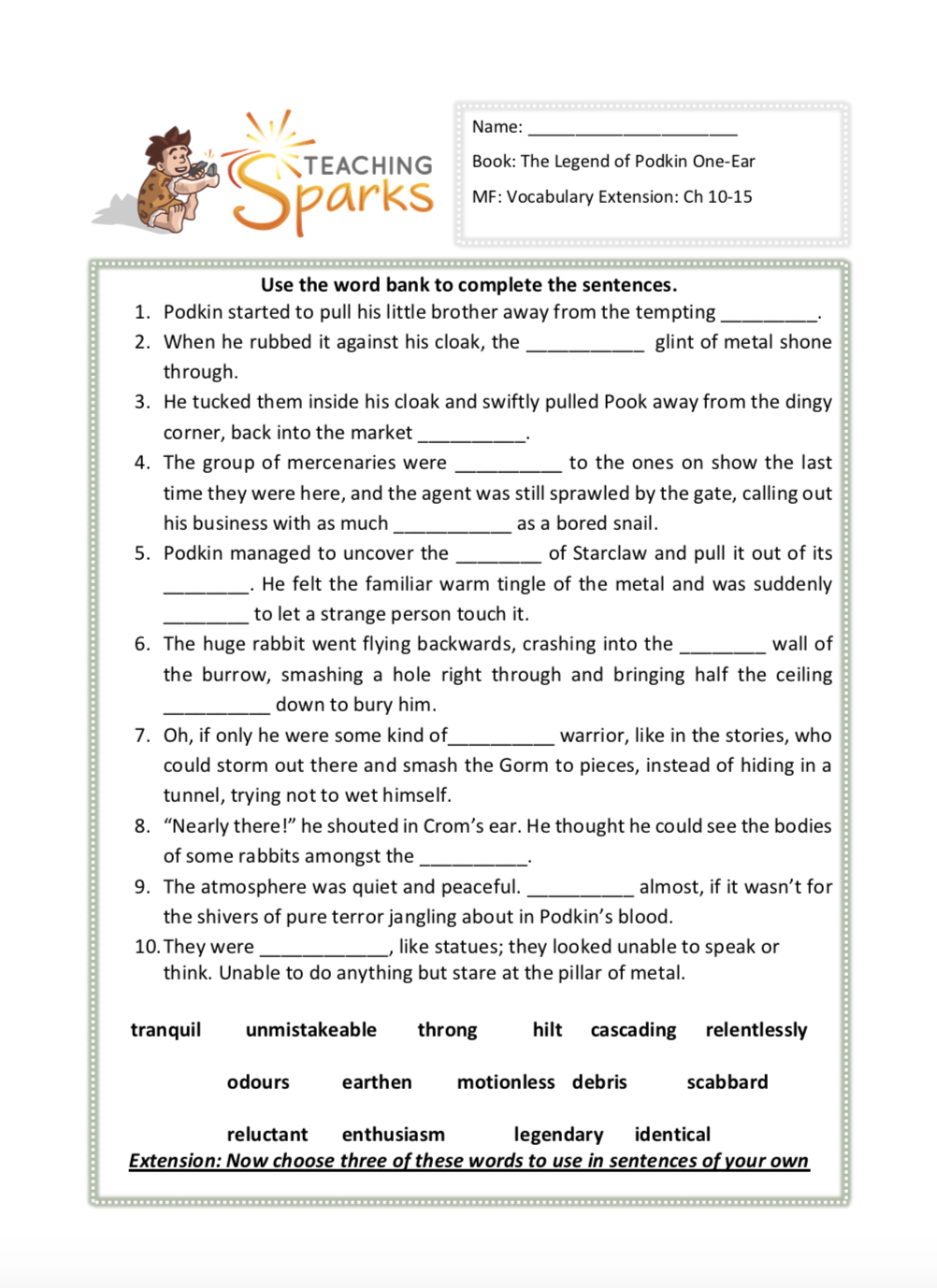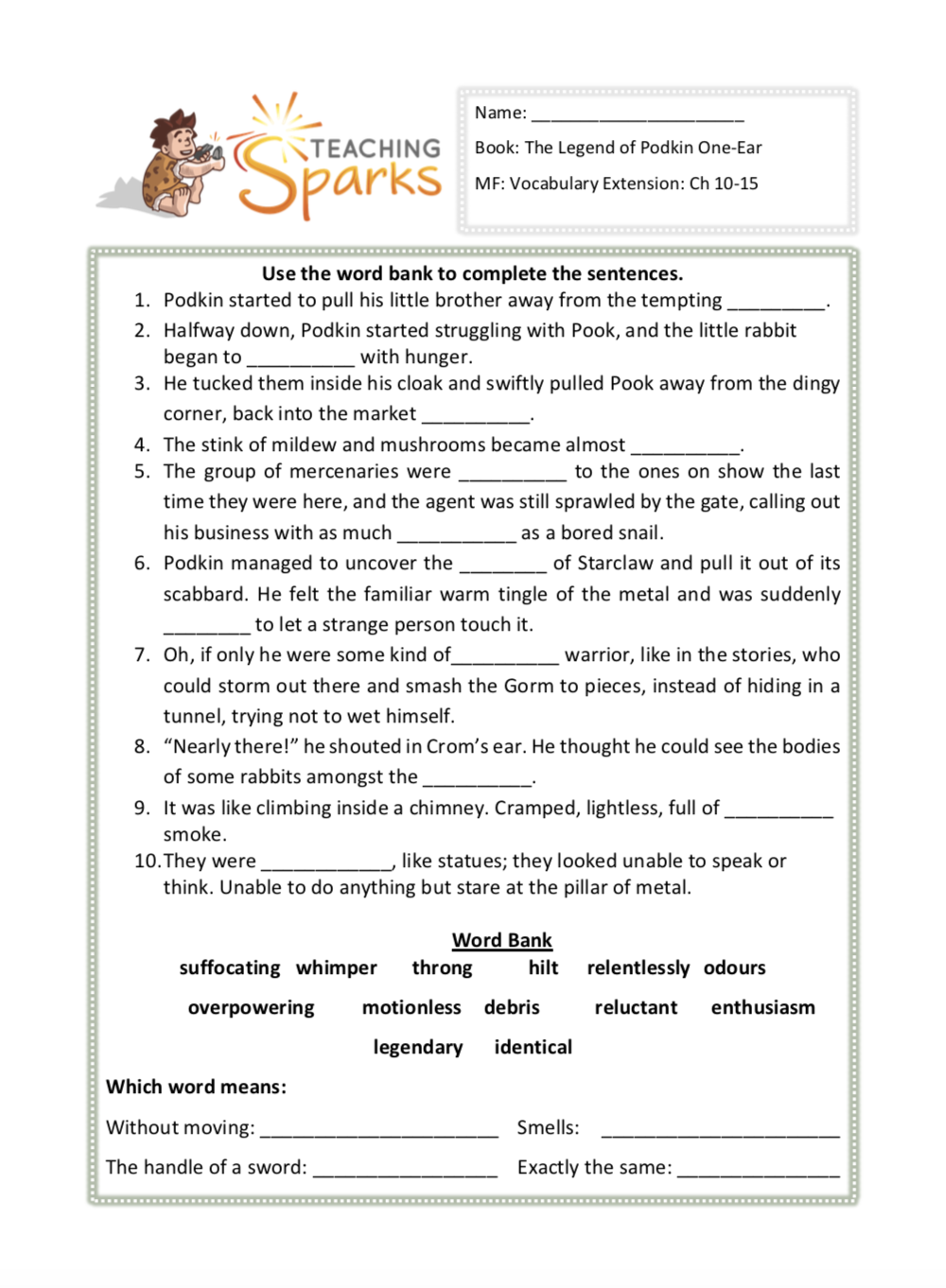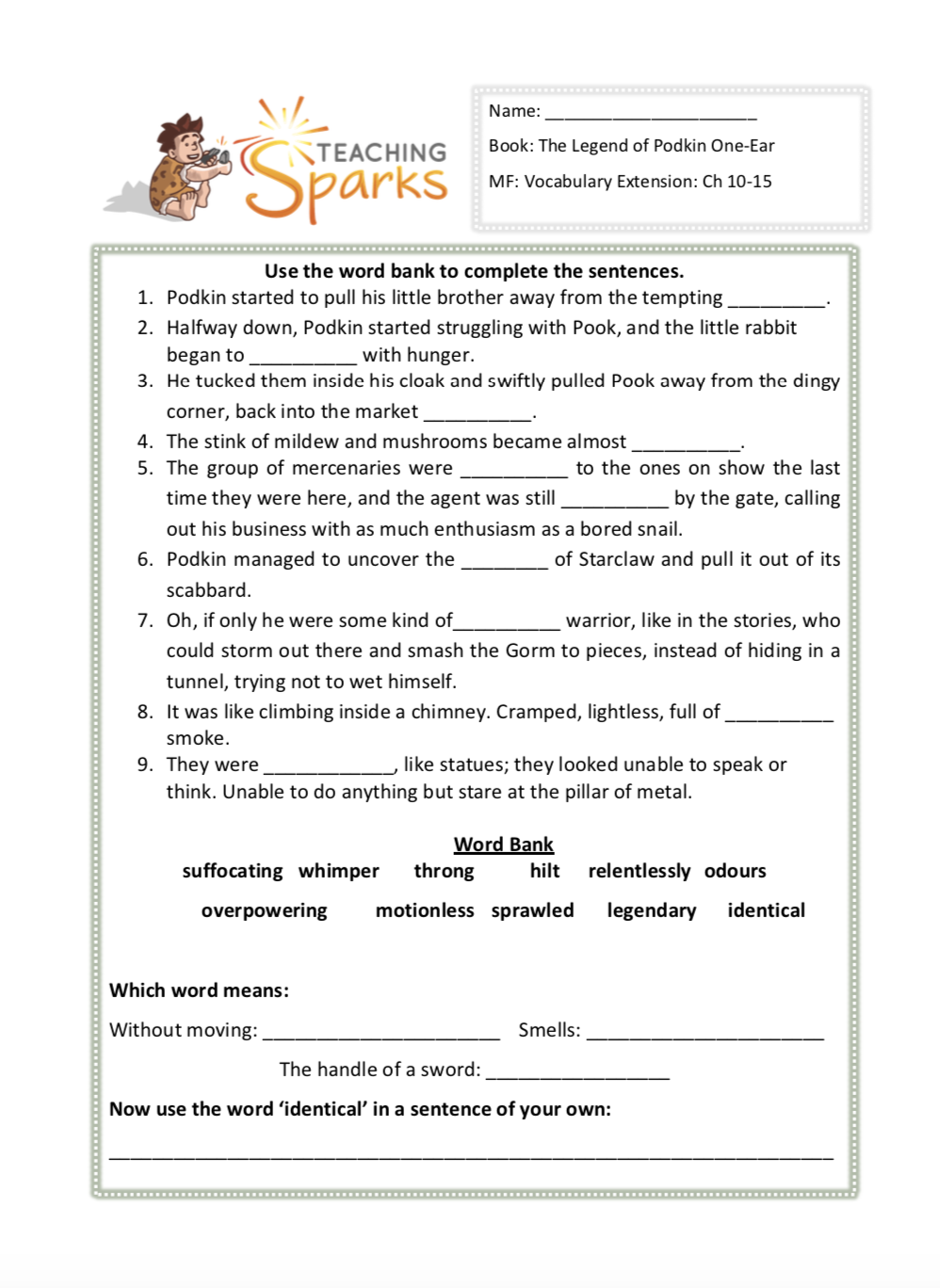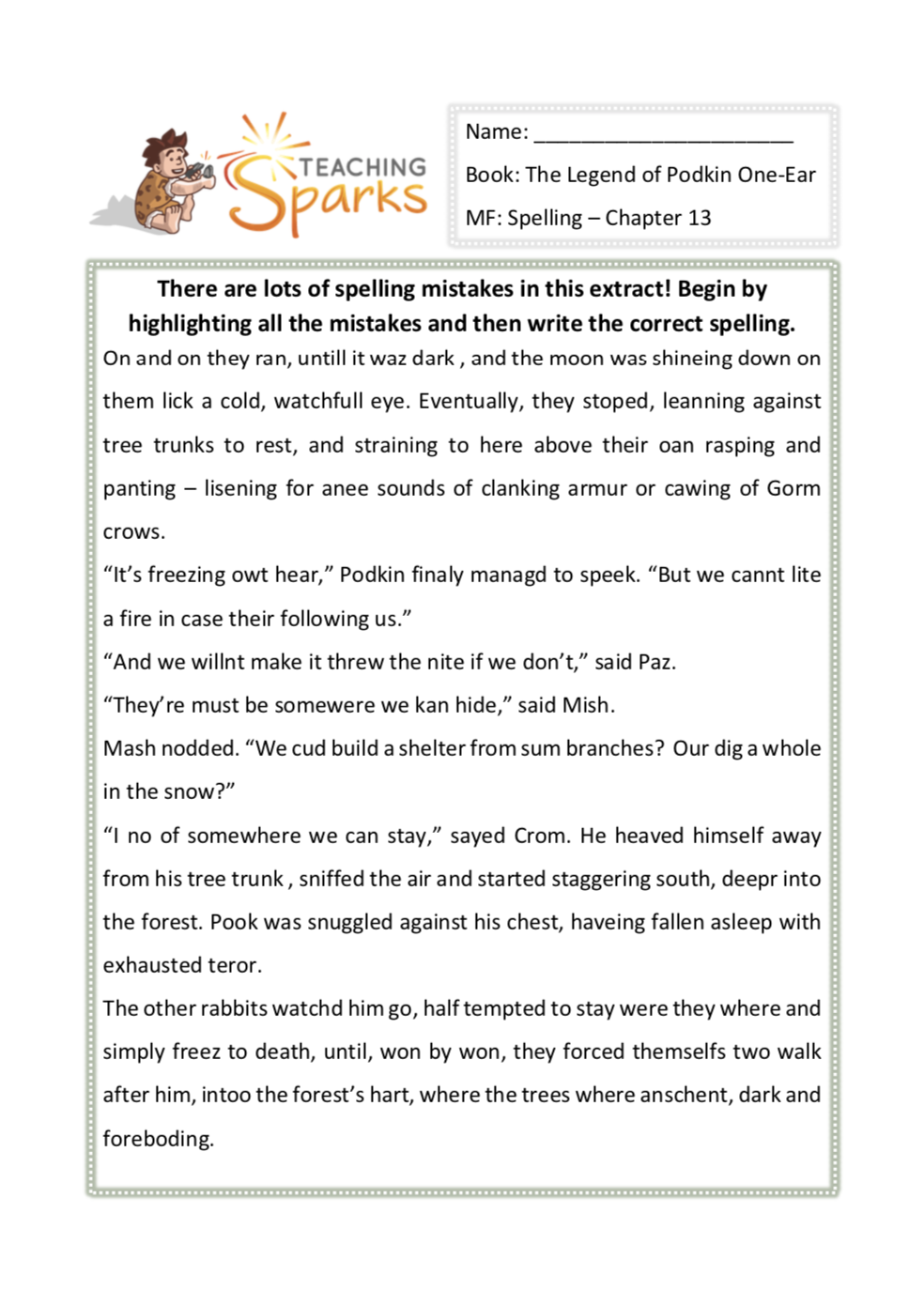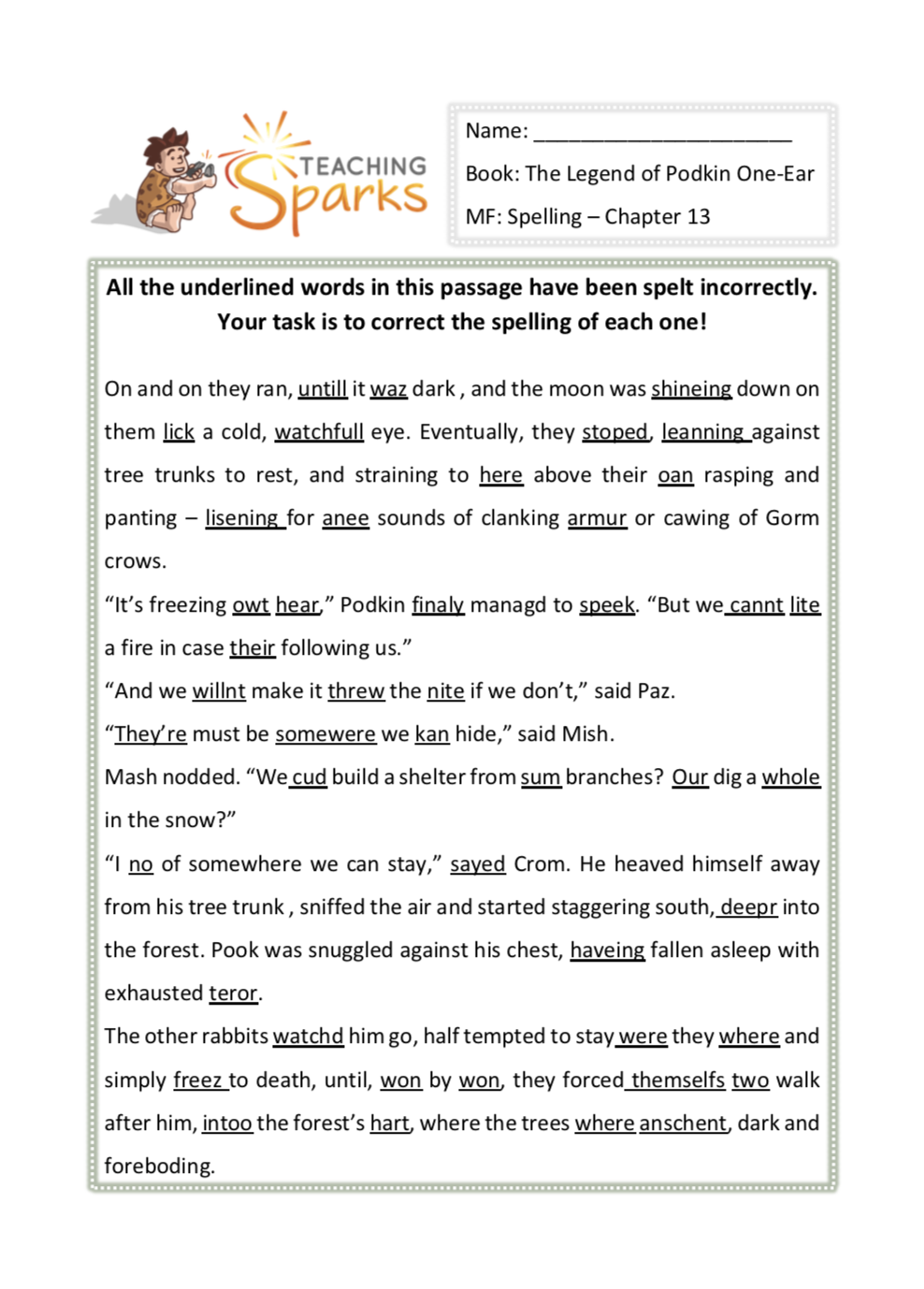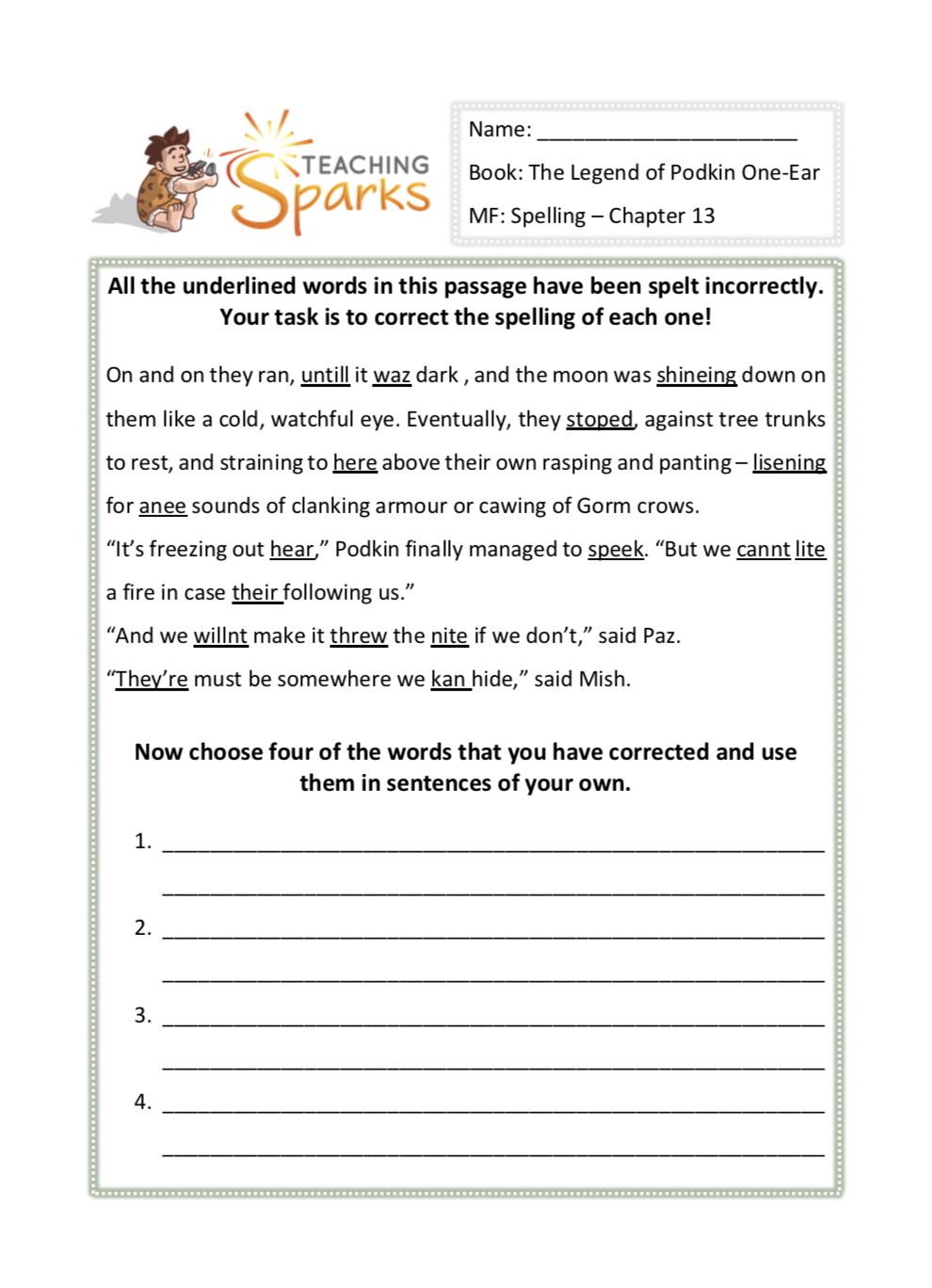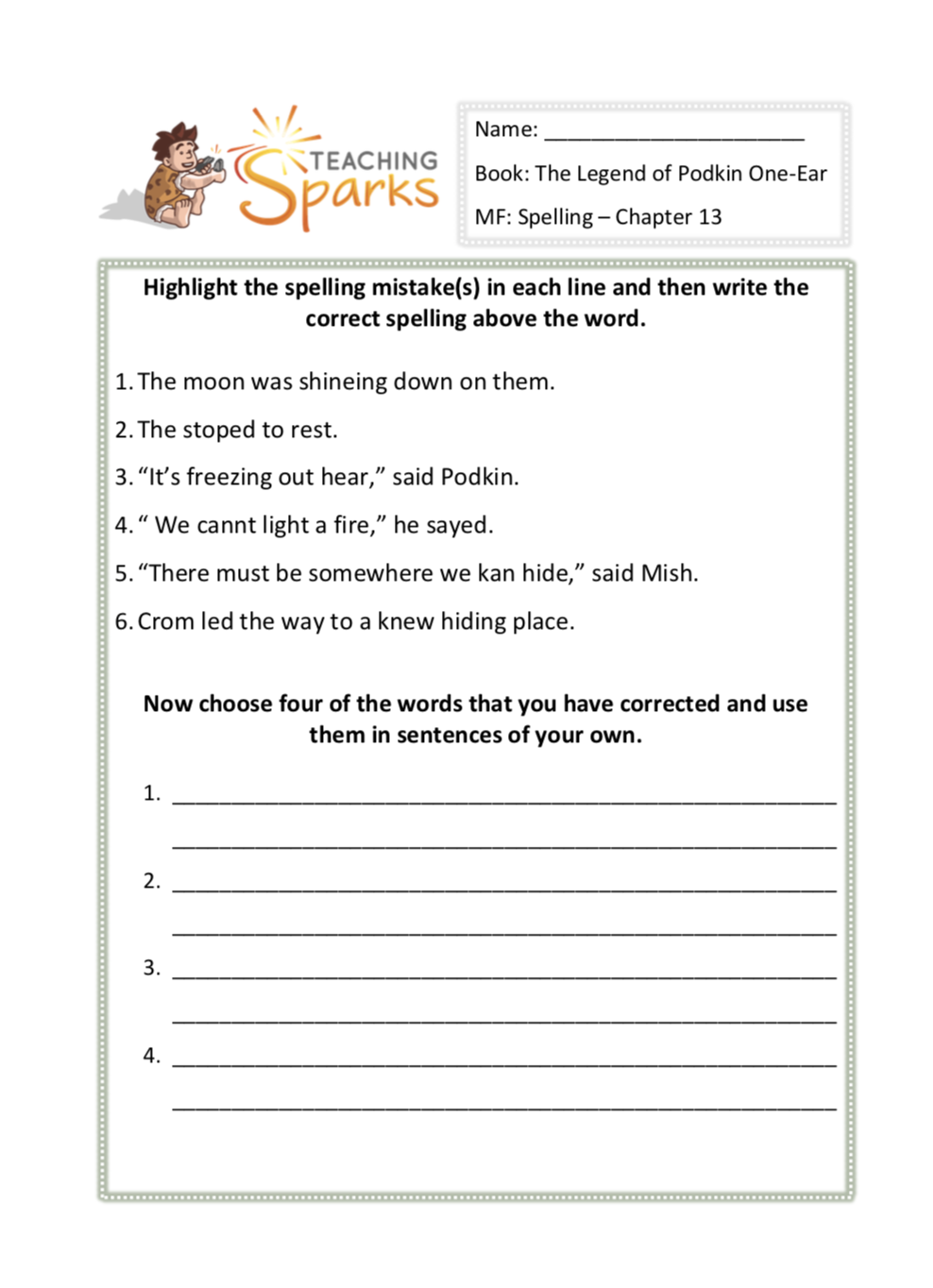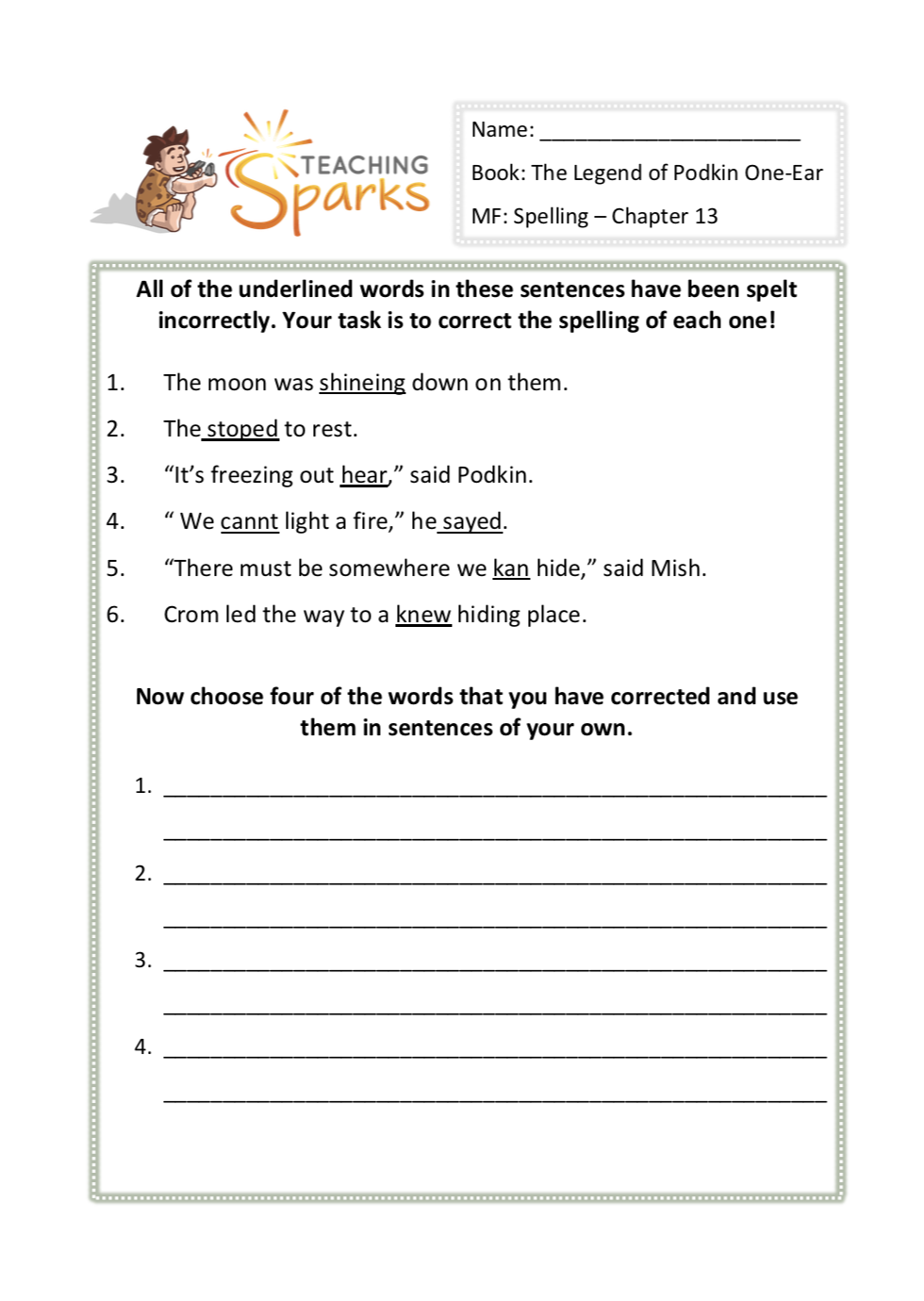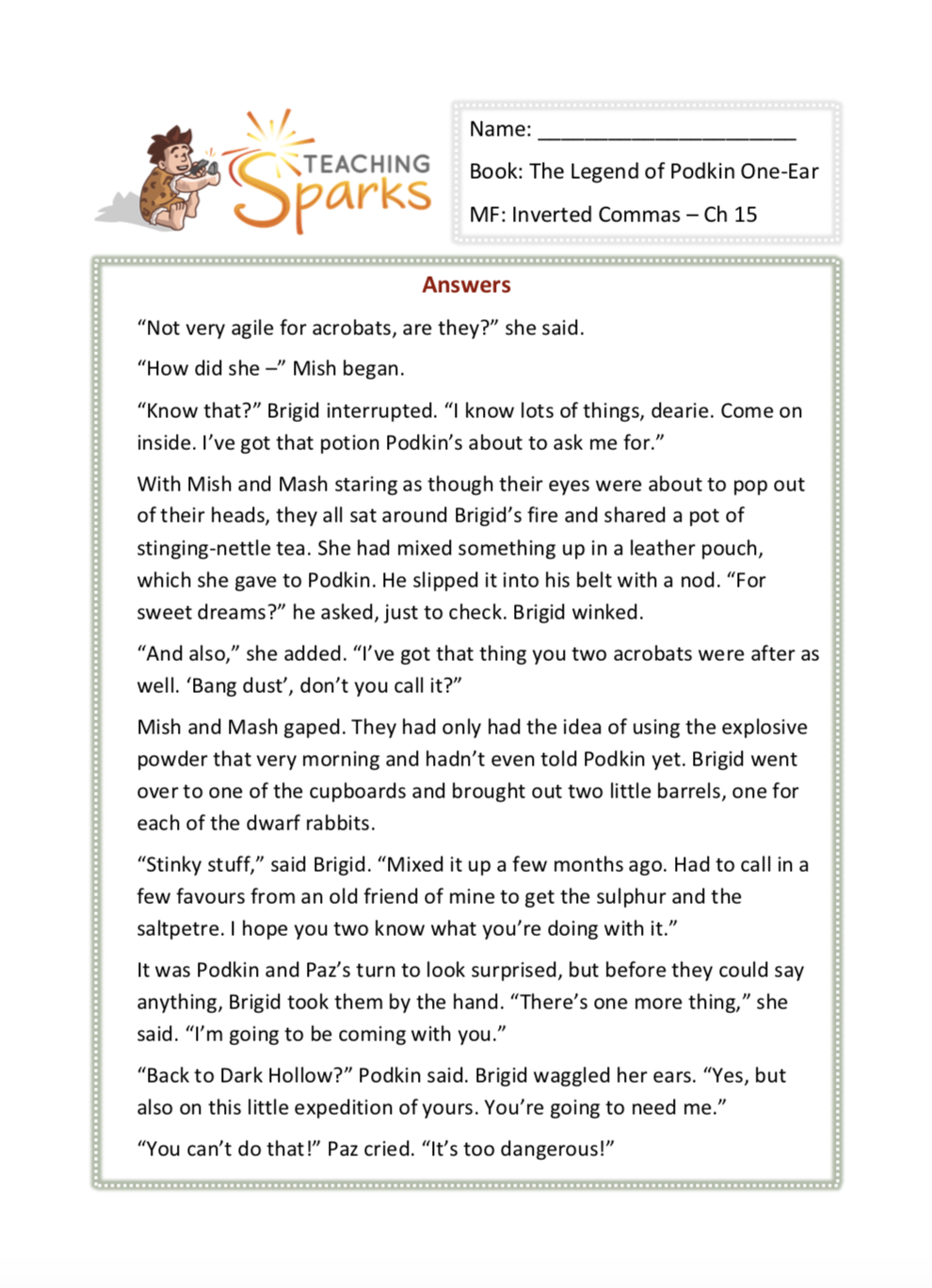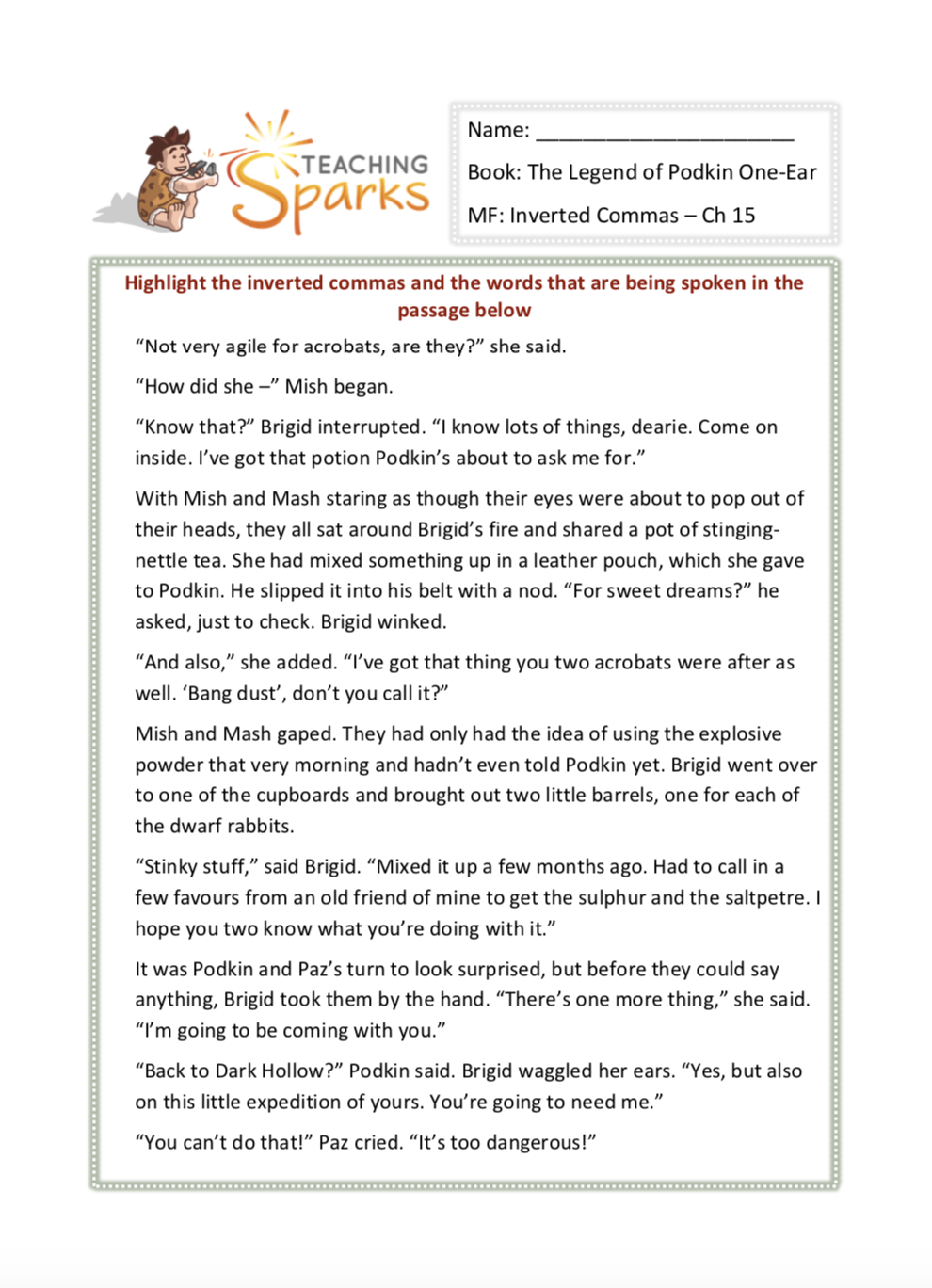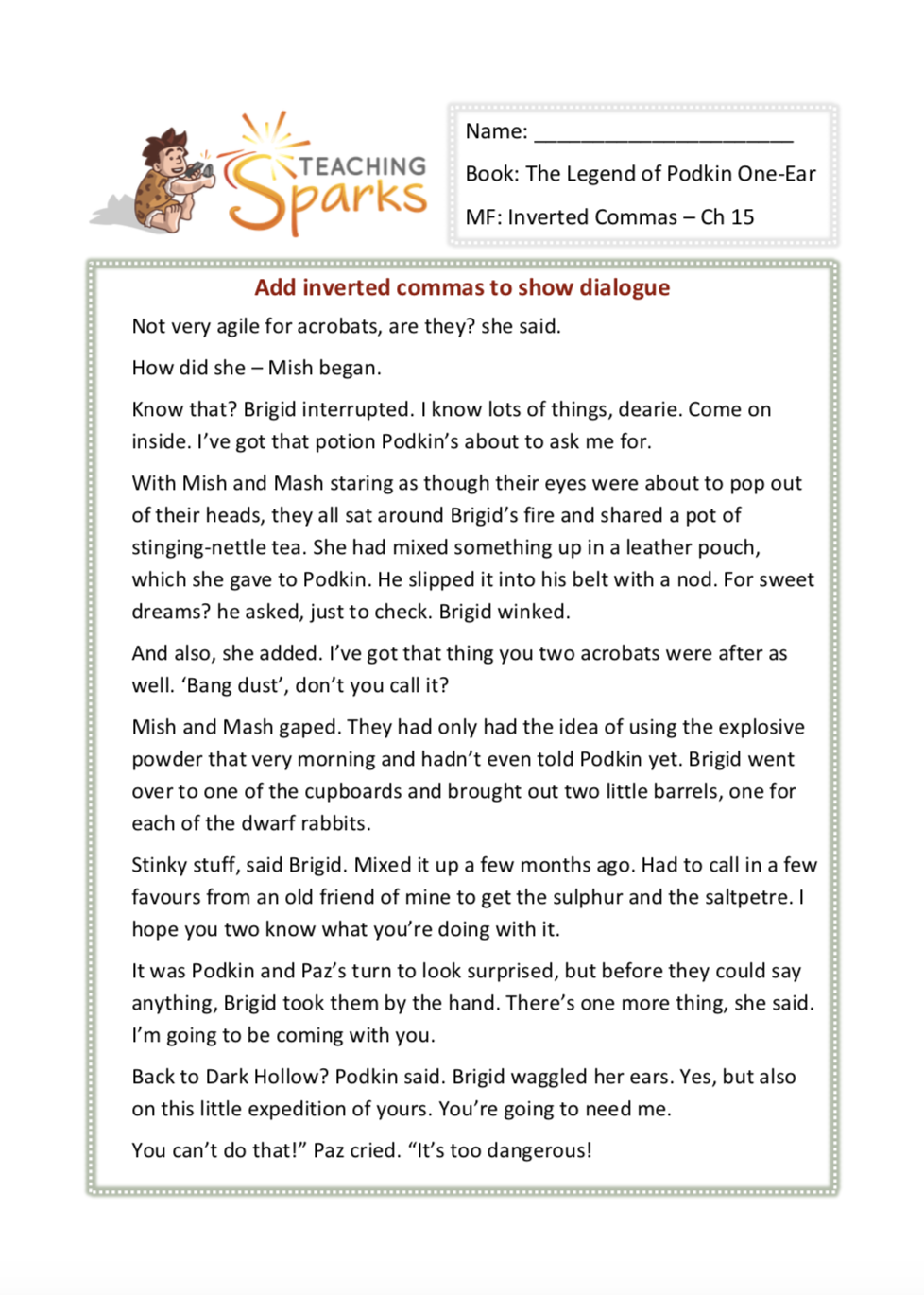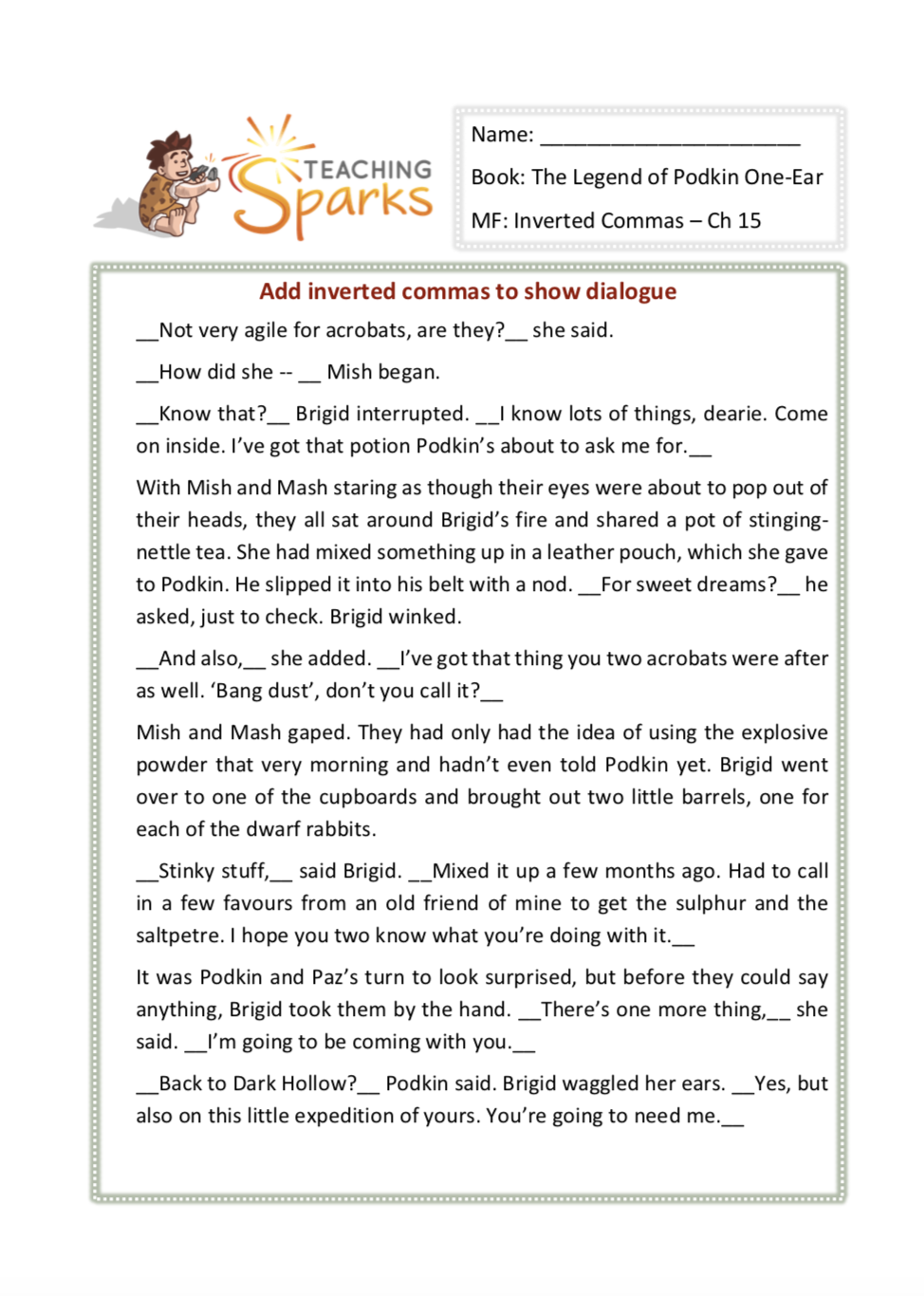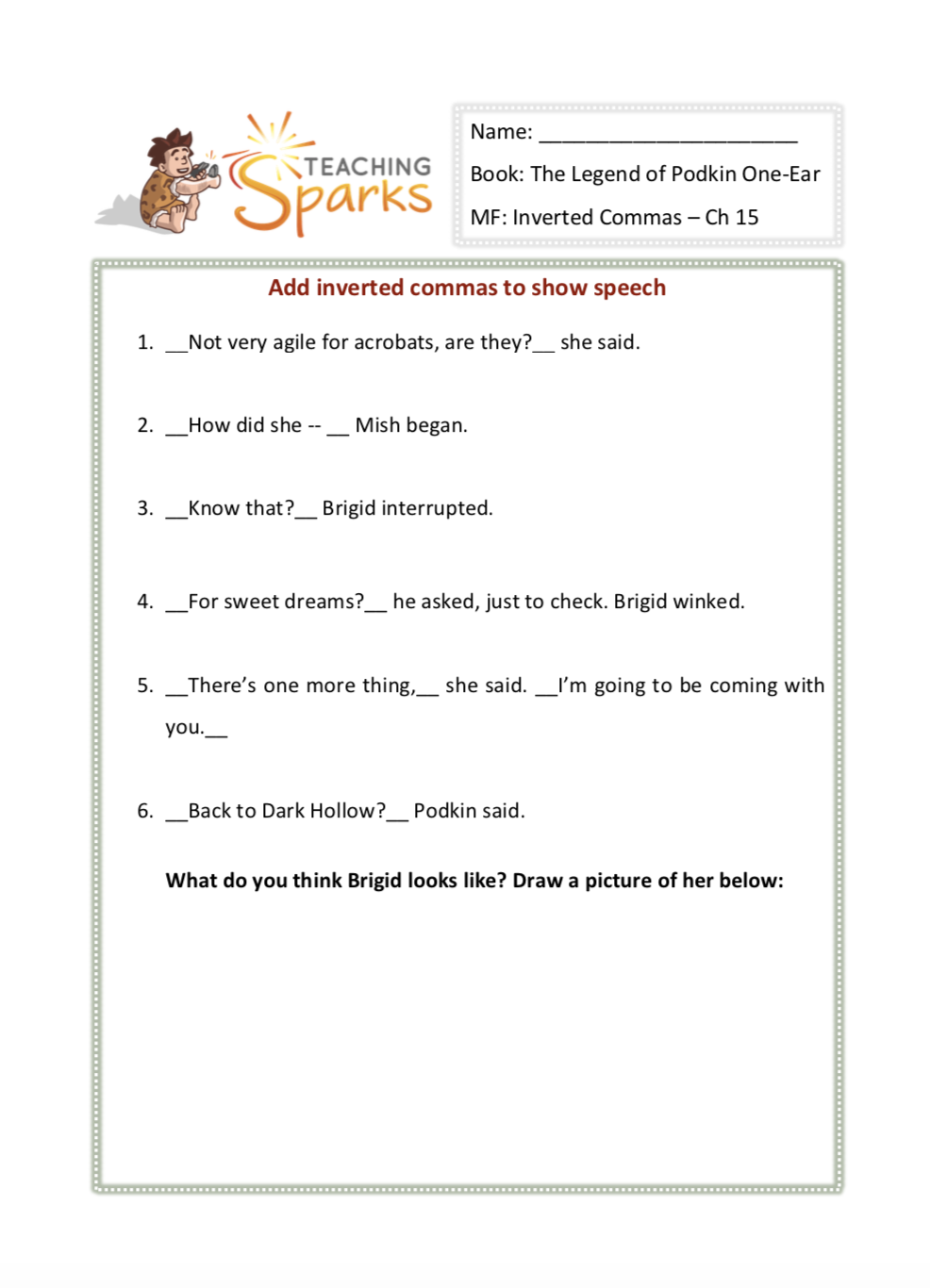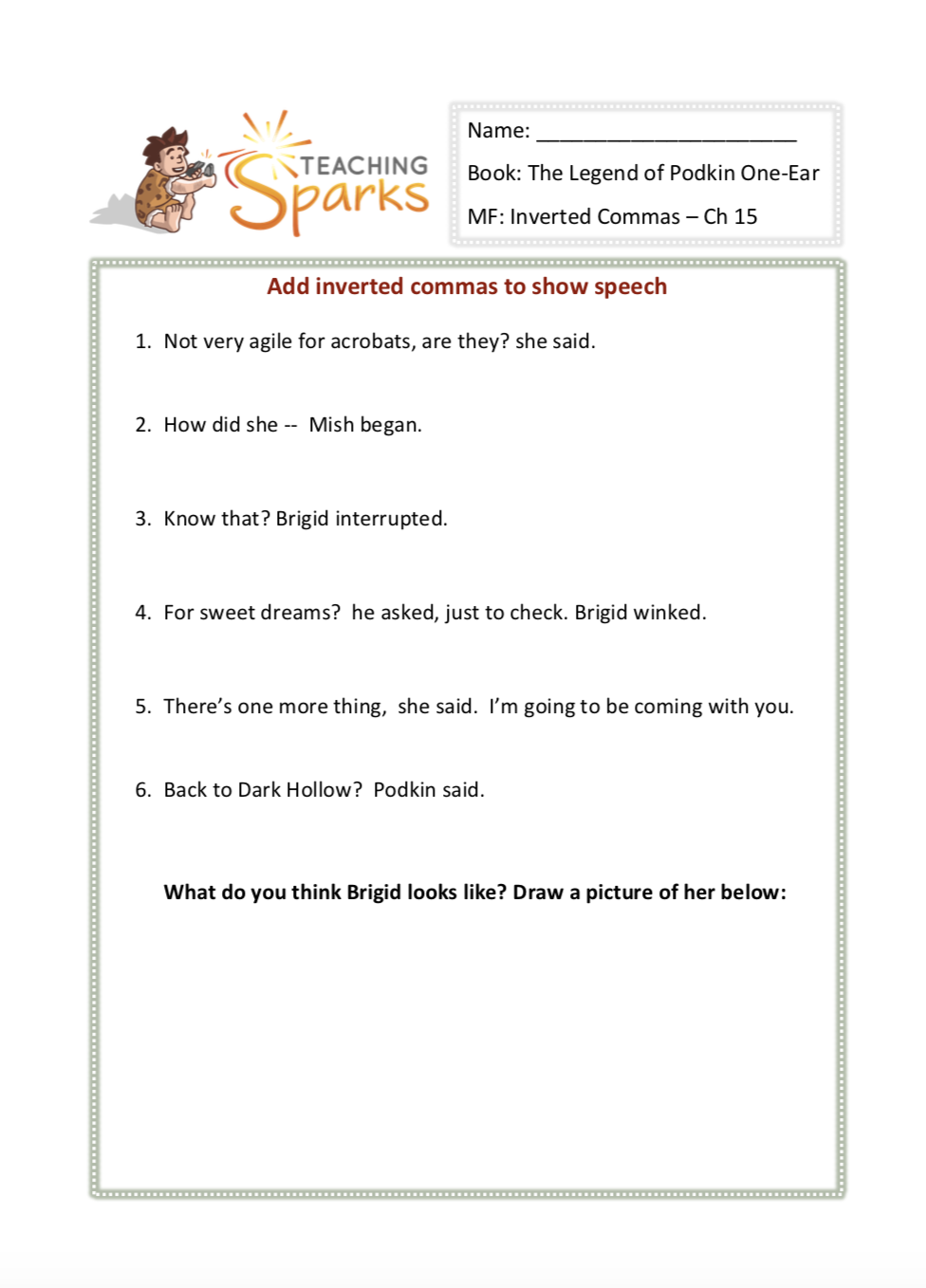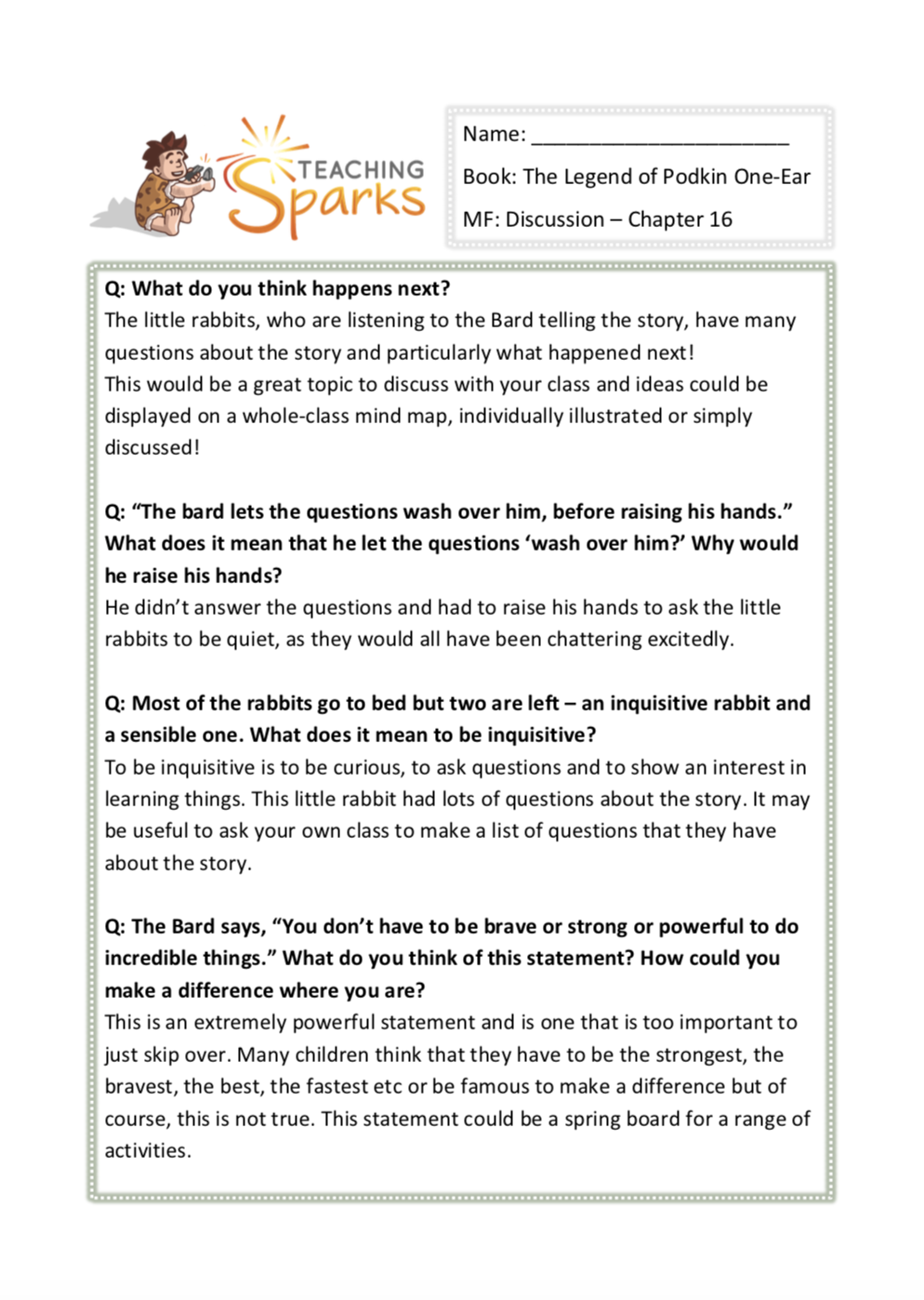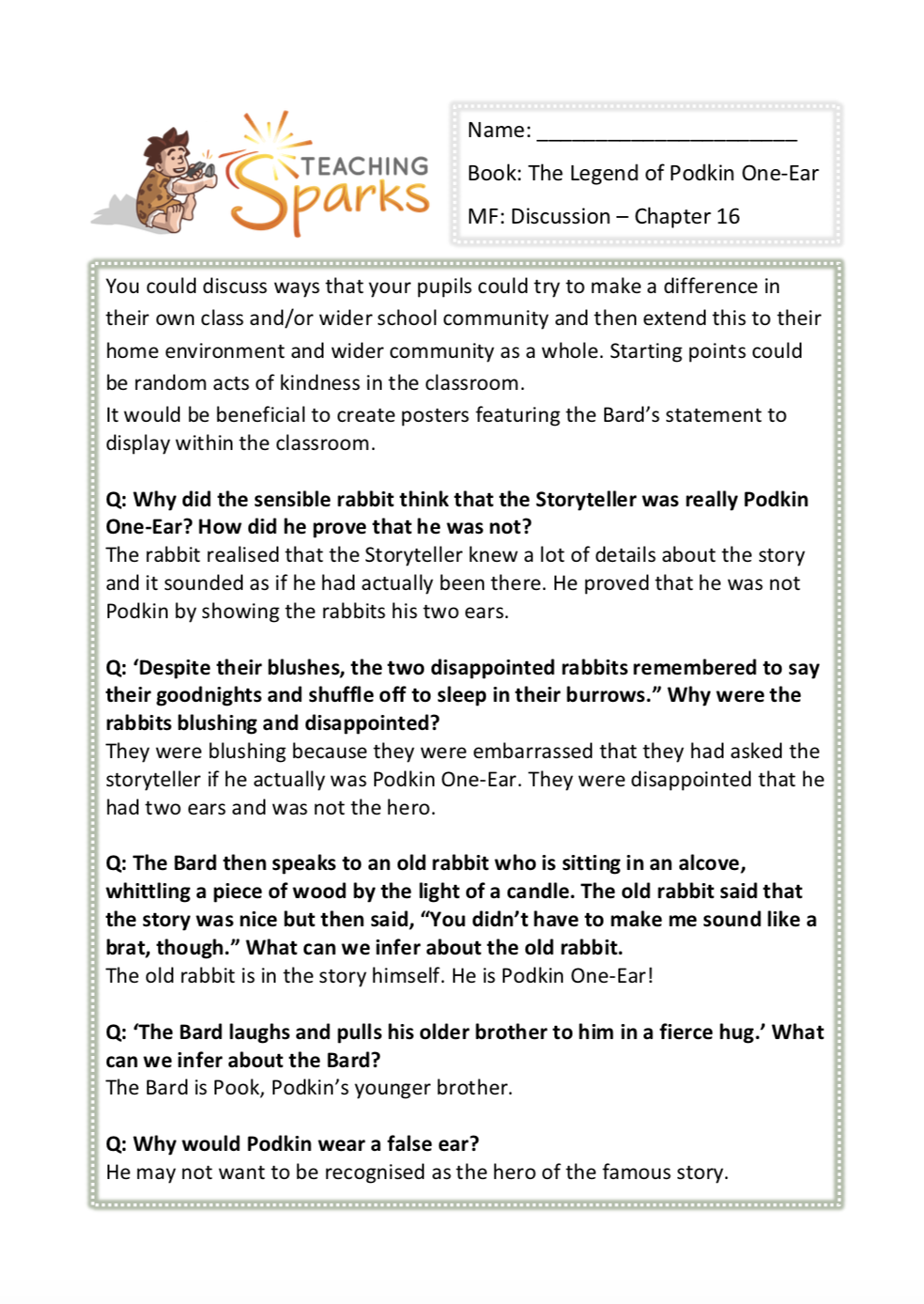The Legend of Podkin One-Ear
The Legend of Podkin One-Ear
Podkin is the son of a warrior chieftain. He knows that one day it will be up to him to lead his warren and guard it in times of danger. But for now, he’s quite happy to laze around annoying his older sister Paz, and playing with his baby brother Pook.
Then Podkin’s home is brutally attacked, and the young rabbits are forced to flee. The terrifying Gorm are on the rampage, and no one and nowhere is safe. With danger all around them, Podkin must protect his family, uncover his destiny, and attempt to defeat the most horrifying enemy rabbitkind has ever known.
Main Focus: Onomatopoeia – Ch 1 and 2
Onomatopoeia is an important tool in storytelling. By using onomatopoeia you can create a vivid reading experience by sharing the actual sounds to the reader, creating a much more immersive experience.
This activity focuses on chapters 1 and 2 of Podkin One-Ear and your Year 3 / Year 4 class will explore the onomatopoeias used.
Why Use It? Onomatopoeia can be a very effective and catchy stylistic choice to use in your speech. Since these words are representations of sound, they can often be jarring. They’re a great way to grab an audience’s attention when used in the right way.
What Next?
Now that you have explored how onomatopoeias have been used in the book with your kids, you can give your KS2 class opportunities to use them in a range of contexts and practise writing descriptive paragraphs applying their knowledge.
Unlock ResourceMain Focus: Cracking the Code - Chapter 3
In chapter 3 Podkin found a letter wrapped around the blade of Starclaw. It was from his mother and had been written in Ogham, an ancient written language that Paz could read but Podkin had been too lazy to learn.
Using the alphabet on page 30, can your Year 3 / Year 4 class decipher this message and create a few messages of their own?
Q: What has this added to the story?
Q: Why has the author included it?
Q: What would the benefit be of having this alphabet opposed to our alphabet?
Unlock Resource
Main Focus: Apostrophes Chapter 4
This resource focuses on chapter 4 of the book and apostrophes.
Your Year 3 / Year 4 class will read the sentences taken from the story and determine where the apostrophe should be and give an explanation if it is to show possession or a contraction.
We have differentiated this resource 6 ways to cater for KS2 classes.
Unlock ResourceMain Focus: Creative Writing - Chapter 5 and 6
In this story, Podkin One-Ear lost his ear when trying to escape from the Gorm at Redwater Warren. However, the little rabbits who are listening to the storyteller have many other theories on how he lost his ear. We have explored a few of these examples.
Your class are challenged to write their own theory on how Podkin lost his ear.
Unlock ResourceMain Focus: Comprehension - Chapter 8
This is a comprehension resource that focuses on chapter 8 of The Legend of Podkin One-Ear.
We have differentiated the resource a number of ways to cater for Ks2 and we have also included answers.
Unlock ResourceMain Focus: Adjectives - Chapter 10
This activity encourages your class to identify adjectives within the context of the story and then use their understanding to apply it to a new context.
We have differentiated this resource for Year 3 and Year 4 and your class can also look at which adjective would suit best in each sentence.
To challenge your class further, you could ask them to write an even better adjective (synonym) above each adjective.
Unlock ResourceMain Focus: Vocabulary Extension - Chapters 10-15
This is a vocabulary extension activity aimed at Year 3 and Year 4.
We have looked through the chapters and have chosen to focus on chapters 10-15 for this activity.
Your class will look at the words used in context, definitions and then include them within the context of the story.
We have differentiated this resource a number of ways so you can choose which best suits your class.
Unlock ResourceMain Focus: Spelling - Chapter 13
This is an activity that encourages your class to read through the passage from chapter 13 of the story for spelling mistakes and write the correct spelling.
This resource included homophones, contractions and other tricky spellings.
Unlock ResourceMain Focus: Inverted Commas - Chapter 15
We have differentiated this inverted commas activity for KS2 classes Year 3 and Year 4.
Your class will read through the passages/sentences from chapter 15 of Podkin and add in the inverted commas / speech marks.
Unlock Resource
Main Focus: Discussion Guide - Chapter 16
This is a discussion guide for chapter 16.
As you read through you can ask your class some key questions and compare them to the answers we have written.
Unlock Resource
